Kristen Lamb's Blog, page 8
November 10, 2021
The Wound: How Pain Can Deepen Our Fiction

The wound is critical for creating dimensional characters and, thus layered stories. Ah, the masks we wear. We all have them because it’s impossible to be fully human and devoid of cracks.
We all have a wound. In fact if you make it past childhood you’re probably carrying around more than carry-on baggage (more than ONE wound). Yet, therein lies the conundrum for those who long to become writers. We’re all cracked, damaged, dinged yet simultaneously bombarded by countless conflicting messages.
It’s okay to cry, darling. Just next time wear the waterproof mascara. You’re a mess.
Many of us are the walking wounded, encouraged to embrace our flaws, experience all our emotions…but then cover them up because no one wants to see that. Jeez!
This ‘logic’ is absurd enough in life, but for authors we must choose the painful path if we hope to write the great stories, the ones that change people and endure. Perfect, flawless, normal and well-adjusted spell death for fiction. Superb stories provide a safe place for readers to ‘feel and heal’ and our job is to deliver that.
Yet, this comes at a price. I know! Always a catch.
Funny Thing About Pain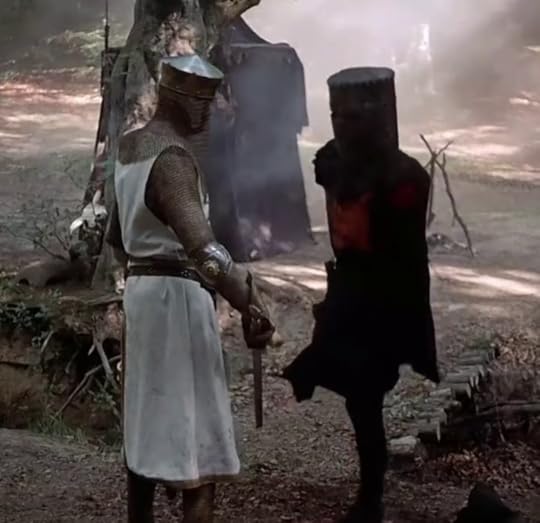 Kristen trying to convince everyone she is A-OKAY!
Kristen trying to convince everyone she is A-OKAY!I remember the first time I broke a bone. I was barely four. What stands out most is it didn’t hurt. At all.
I remember gaping at my left arm in a spiffy S shape, unable to wrap my head around why there was NO pain. After many years and many more injuries I learned the wounds that hurt were never as bad as ones that didn’t.
Of course this is basic physiology. When an injury is bad enough it overloads the pain centers of the brain, short-circuiting our ability to feel anything. This gives time for the sympathetic nervous system to flood the body with hormones to keep us alive.
Heart rate slows, blood pressure drops, and our endocrine system unleashes a tsunami of fight or flight hormones. All these physiological responses—in the meantime—are necessary for us to survive long enough to do something about the wound.
If, however, the shock is not dealt with, the victim will ironically die from the very mechanism designed to keep the body alive.
Emotionally Walking Wounded
Something similar happens to us when we experience emotional trauma. Emotional disconnection—also known as denial—is the mental equivalent of ‘being in shock.’
Our body never intended ‘denial’ to be a permanent solution, just a stopgap to protect our psyche from overload. It’s the brain’s way of protecting us from emotional implosion (I.e. a nervous breakdown or psychotic break).
Like the body lowers blood pressure and heart rate to keep us from bleeding to death, the mind dulls our emotions and minds to keep us from unraveling. There will (should) be a time and place to face the trauma, but drinking demons from a fire hose is not our brain’s first choice.
The trouble, however, is that though we need to face these traumas, denial can become a ‘comfortable enough’ purgatory.
This is where our MC should be in the beginning. There is a wound and they are in denial. The story is what will bring about authentic healing.
Our characters (like their creators) have become masters at hiding, stuffing or numbing negative emotions into submission. Maybe they’ve endured their wounds so long they’re unaware the wounds exist because pain is their ‘normal.’
Dare to Look for the Wound
As authors, we’re wise to appreciate that readers read for the same reasons writers write. Wounds. This is where things get…tricky. Many writers write as a way to treat our own wounds. Face it, writing fiction is way cheaper than a good shrink or solid criminal defense attorney.
Murdering imaginary people is legal  . *double-checks on Google* Yep, totes legal.
. *double-checks on Google* Yep, totes legal.
Many of us learned in high school it was safer to bleed in the library because the sharks were in the cafeteria. Trouble is, being afraid to face or admit we’re anything but perfect makes for some seriously dull as crap ‘stories.’
Yet, I posit this:
All fiction is about a wound colliding with a core problem in need of resolution.Fiction (stories) must possess both wounds and a core problem. Ideally, the wound and the core story problem will somehow be related.
If we only have problems, we don’t have a story. There is no drama, only melodrama. We have bad situation after bad situation after bad situation. Characters passively flung like flotsam and jetsam on the cruel currents of Life’s Unfair.
*yawns*
When our character(s) wax rhapsodic about inner demons (sans core problem in need of resolution), that isn’t fiction either. It’s comes across as self-indulgence, journaling, whining, lecturing or even pontificating.
Why? Because fiction is the wrong medium for solely discussing wounds. Essays? Self-help? Blogs 
Cool…maybe. As fiction? Snoozefest.
Writers KNOW the Wound
We are all emotionally messed up to some degree. If you’re not at all messed up then you’re a) a robot b) in denial c) a sociopath d) not fit to be a writer. There is no normal. ‘Normal’ is a setting on the dishwasher. That and normal is also…normal (a.k.a. boring), ergo terrible fiction.
Readers cannot connect with perfect, but they will connect with wounds. This means we writers, uh, need to connect via wounds.
Yeah.
Also, the wounds we will write the best *tugs collar* will likely be the ones we hide deepest and….*mutters low* the ones we fear most.
Remember…
Dragons always guard the treasure. The larger the treasure, the bigger the beast. Emotional damage in fiction is GOLD.This means, my relentless drive to hone my skills as an author has been a petal-lined path with unicorns, rainbows and daily facials.
Okay that was a total lie. WHAT? I’m a writer. It’s what we do.
I had to face I am an OCD control freak, a rabidly critical perfectionist, and a Type A+ because Type As didn’t do the extra credit #Slackers.
So Many Masks to Hide the WoundAnd so little time. If we want to excel at writing, first things first. Write what you know.
What are our masks? What wounds are we hiding? If we are brave enough to do this hard work, this is when the great stories happen (which we’ll talk about in another post).
For me? My primary go-to mask is the clown. Shocking! I KNOW!
 Am I doing something wrong? Or are Kiwi butts smaller?Writer brains. Sigh.
Am I doing something wrong? Or are Kiwi butts smaller?Writer brains. Sigh.Which humor is wonderful. I love to laugh and love making other people laugh even more. The problem, however, is that I use comedy to deflect, minimize, hide and, if pushed?
Fight dirty.
Alas, there’s a good reason comedians have such a high suicide rate. They might be the funniest person in the room, but they’re often the most wounded. Jokes are a fantastic smokescreen for pain.
This means most other people are oblivious to how deeply the ‘clown’ is hurting (I.e. Robin Williams). The self-defense mechanism ends up being the comic’s undoing.
Case in point, I was once in a horrible accident and had all the EMTs cracking up as they prepped me for the ambulance. My shame for actually ‘needing help’ spilled out in grand comedy, almost to my detriment.
The first responders initially had no idea how badly wounded I really was because I kept them in stitches…since me needing stitches was *shivers* such a burden.
Though I hate admitting this, I’m fairly sure if I were shot I would either a) make jokes or b) profusely apologize for the mess as I tried to clean it up while stemming the bleeding…without using the good towels c) try to do surgery on myself with a glue gun and Batman stickers to save money or d) all of the above.
I learned to hide my weakness, needs, hurts behind a mask of humor and still do. When that doesn’t work? I have a vast collection of other guises to fake that everything’s fine.
Also, this is opening my eyes to others. What are their masks and what wounds are still bleeding beneath?
The WHY Reveals the Wound
I’m challenging you guys to embrace the wound because humans are born of blood and so are the best characters. It’s what makes them feel so real. Sure we can have a tattooed felon or a homeless prostitute as an MC but that damage is more obvious. Those types of characters also won’t work in some genres.
Let’s take an MC who’s a trauma surgeon determined to save lives. Great. How do we keep this super perfect character from being one-dimensional and boring?
Go for the WHY. WHY did she become a surgeon in the first place? Was she hoping to finally earn praise from emotionally absent parents? Maybe she’s competing with a sibling who always seems to outdo her? Does she hide in her profession because she can’t handle the mess that is her home life?
Dig deep.
WHY does your heroine need to make every holiday storybook perfect? What propels your hero run into burning buildings? Is there a reason your cupcake baker is an OCD perfectionist?
Why do they do what they do, good and bad? They do all this because they are compensating for a hidden wound.
And if not, they’re likely dull as dirt.
Wounds will enhance all fiction. ALL of it.
Also, when we know and explore the wound, PLOTTING is MUCH easier because we know precisely what problem will create the most stress and force the most change.
What Are Your Thoughts?Have you been afraid to write in a way that makes you feel vulnerable? Afraid to feel? I know I have. Working on it. What novels, series or movies resonated with you most? Looking back, did you connect because of what we discussed today? Have you used your fiction to work on your own masks, wounds, issues?
What are YOUR favorite go-to masks? Why do they help? How do they backfire?
I love hearing from you, and I am NOT above BRIBERY!
What do you WIN? For the month of NOVEMBER, for everyone who leaves a comment, I will put your name in a hat. If you comment and link back to my blog on your blog, you get your name in the hat twice. What do you win? The unvarnished truth from yours truly. I will pick a winner once a month and it will be a critique of the first 20 pages of your novel, or your query letter, or your synopsis (5 pages or less).
October’s winner is jguenther5 and September’s winner is Kate Lavender. Apologies for the delay. Been neck deep fixing tech issues. Please email your 20 pages (5000 words), double-spaced, one-inch margins. Times New Roman font, 12 point, to kristen at wana intl dot com with CONTEST WINNER is caps so I can find you in the monstrosity that is my email.
ClassesThe Edge: How to Write Mystery, Suspense & Thriller is available ON DEMAND (sign up HERE and use Thrill10 for $10 off). The recording turned out FANTASTIC, so check it out.
The post The Wound: How Pain Can Deepen Our Fiction appeared first on Kristen Lamb.
November 5, 2021
Johari Window: Harnessing Character Blind Spots

The Johari Window can be one of many powerful tools for crafting dimensional characters. It can also help creators develop layered stories (plots) that will resonate long after the audience reaches ‘The End.’ Why? Because great fiction is even better therapy.
Too many believe fiction to be a fluff, an escape, a fantasy getaway. Some fiction does this for sure. Yet, the stories that hit the market and continue to ripple for decades, centuries, or even for millennia share a common denominator.
They offer the audience deeper insights into themselves, their beliefs, and the world around them. Also, their messages are timeless. It’s why we can take a Shakespearian play and set it in modern times and the story and message are just as powerful.
The characters might wear modern clothing, fight with machine guns instead of swords, but we identify with their hopes, dreams, hurts, struggles and weaknesses just as much as the audiences from centuries ago.
What is the Johari Window?
American psychologists Joseph Luft and Harry Ingham developed this model in 1955 as a way to improve group dynamics. The Johari Window is a technique used to refine and boost feedback, prompt disclosure, and ultimately deepen self-awareness.
‘Johari Window’ derived its appellation using a combination of the two psychologists’ names.
The model is founded on two fundamental ideas.
First, that trust is earned when one reveals personal information to others.
Second, that this information then leads to feedback from others which can then give the person a more accurate ‘reality.’
Using feedback, we can become more self-aware and change accordingly.
The Johari Window Structure Image courtesy of Wikipedia Commons.
Image courtesy of Wikipedia Commons.The Johari Window consists of four ‘panes.’ Two panes reflect the self and the other two represent blind spots and areas unknown to the self but visible to others.
The first pane is the most open. This is information a person knows that others know as well.
The second pane is the blind spot. Often this is what others can see, that the person (character) cannot.
The third pane is a hidden area containing information the person knows, but hides from others.
The fourth pane is the Unknown area, the place where all parties are completely in the dark.
Creating a Character Using Johari Window
The blind spot is critical for creating a dimensional protagonist who can arc to becoming a hero. Ideally, we want to design a story problem that forces the MC (main character) to finally see their blind spot and how it’s negatively impacting their lives (and others).
The story problem is the crucible. If our MC had never encountered the story problem, they would have remained ignorant of a critical weakness.
Other characters in the story (mentors, allies, antagonists) represent the sounding board that drives that final self-awareness and group understanding.
Ideally, by the end of the story, the MC has dealt with the blind spot, and the Unknown quadrant will be markedly smaller.
Applying the Johari Window for Fiction
Now that I’ve explained what the Johari Window IS, how can we apply it practically if we don’t work in HR?
Instead of using a movie or book, I’ll riff a quick example. It’s rough and imperfect but most novels are in the beginning. The key is that we at least get off to a sound start with a solid story foundation.
Let’s say I want to write a Young Adult Urban Fantasy about a teenage girl, who, after a bad accident, starts having nightmarish hallucinations.
She’s unaware that she can actually see into the future.
Pane #1This is information my character knows mixed with what others also know. This is usually very surface.
For instance, the character, her fellow students and teachers know her name is Sarah Smart, that she has lank dark hair and is spindly thin. She’s a sophomore at Small Town High who performs just well enough to pass her classes.
Sarah is a loner who sports combat boots, spiky jewelry, and concert shirts from various heavy metal bands.
She doesn’t have friends, lives in a rundown area of town, and rarely talks to anyone. Though she doesn’t cause trouble, she goes to great lengths to push people away. Perhaps she answers any questions with closed-ended, yes-no answers.
Maybe she cuts class, or retreats to the library whenever there’s a pep rally. She also constantly chews aspirin.
All this ‘information’ is obvious to Sarah and those around her.
Pane #2This is Sarah’s blind spot. Others might see areas of the blind spot, but Sarah will be oblivious.
Sarah fails to see herself the way others do. In her mind, she’s not hurting anyone and wants to be left alone. Others, however, find her caustic, abrasive, stuck up, or just plain weird.
Sarah thinks she’s crazy, her headaches and visions a remnant from a head injury suffered in a bad car accident.
Pane #3This is what Sarah knows that others do not.
Her mother who, after almost twenty years sober, now drinks every waking hour. Mom fell apart after her only son (Sarah’s brother) drove the family car headlong into a tree and *died.
The tox screen indicated he was well over the legal drinking limit. Also, witnesses claimed to have seen him swerving and driving erratically, thus the town rumor was that he was driving under the influence.
His body was so mangled, Sarah and her mom had to hold a closed casket funeral.
The town gossip grew so bad, Sarah and her mother had to move. No one in the new town or school knows about her brother, the accident, or her mother’s severe drinking problem.
Right after the hospital released Sarah, she suddenly started getting bad headaches coupled with terrible and confusing visions. She has no idea what’s happening and believes she might be going crazy.
Perhaps, she believes the headaches are from the accident, the visions are due to her guilt. Why did she let her brother drive? Why did she not see he was unfit to drive?
She hadn’t even seen him drinking. He hated alcohol because of what it had done to their parents. But the tox screens don’t lie, right?
His death is all her fault and these headaches and nightmarish visions are her punishment.
Pane #4This is the information unknown to all parties involved (at least in the beginning). Sarah isn’t going crazy, she actually has the ability to see into the future.
Her brother wasn’t drunk at all. He, too, had the same gift—he could see into the future—and was hit with a vision while driving which caused him to lose control of the car.
This is also what will form the basis for the story problem (more on that in a moment).
Sarah actually wants friends, to be part of a community, but is too ashamed and afraid. The story problem will change this and shrink the Unknown for Sarah as well as those around her.
Story Problem Through the Johari Window
Using this quick exercise with the Johari Window, it’s now easier to construct a story that will force Sarah to face what she fears (that she’s going crazy) and to make peace with her inner demons (guilt about brother’s death).
Ideally, it will drive Sarah onto a path where she’ll gain mentors and allies. The more awareness she gains, the more information she shares, the closer relationships she will form.
Story Problem: What if Sarah’s brother actually is NOT dead?
If we take a page from to hit Netflix series Stranger Things, maybe some black bag government operation had been watching her brother.
He’d been in counseling, discussing his visions and someone with a lot of power realized they weren’t hallucinations at all. Rather, the young man could actually see future events.
At the time of the accident, this agency saw the perfect opportunity to abduct the brother. They substituted another (badly mangled) body, forged the tox screen and dental record match, then helped spread rumors the young man died drinking and driving.
This agency is now using him in some underground bunker to predict terrorist attacks.
Normal World
We get to know Sarah in her regular, but broken, world. See her picking up empty bottles of cheap vodka and putting her mom to bed before she heads off to school. Maybe she prizes a photograph of her ‘dead’ brother out of Mom’s hands as she tucks her in to sleep off the booze.
At school, Sarah sits on the sidelines wanting to be part of the group, but pushing away anyone who tries to be friendly. Maybe she runs into a new substitute teacher who sets off all her spidey senses, but she has no idea why (he’s an agent following to see if Sarah, too has the gift).
The substitute teacher is a proxy, and how we introduce the Big Boss Troublemaker—the black bag agency that has her brother hostage and wants her, too.
Sarah later talks to a teacher, only to have to cut the conversation short because of one of her headaches. In the bathroom she’s knocked to her knees with a vision of a fellow student run over by a jock speeding through the parking lot, but dismisses it.
Only a nightmare. A hallucination.
She firmly believes this until she’s leaving school and the leading action preceding up to the event plays out exactly as she’d seen it happen in her vision.
This time is different. She takes action.
Sarah dives after the kid, preventing them from being run over. The fellow student likely will be her first ally.
Yet, her direct intervention into a future event will also be the signal that lets the enemy know Sarah does have the gift they seek.
This is a turning point for the BBT—she’s like her brother and they want her, too. It’s also a turning point for Sarah—maybe she isn’t crazy after all.
Plotting from the
See how using the Johari Window we’ve created a dimensional character with a lot of baggage, issues and self-doubt? This knowledge also offered a clear way of seeing a solid story problem that would make Sarah grow.
What would she want more than anything? To have her brother back.
If she starts suspecting she isn’t crazy, this propels her on a search that will begin revealing that she actually does see the future, her brother had the same complaints, and if he had her gift? Maybe he isn’t dead.
She’s propelled down a path searching for answers, a road that will inevitably lead to finding out the truth.
We also have an accurate picture of her in her community in the beginning and a good map of where the story needs to go.
If it begins with Sarah as a loner, wracked with guilt and shame and alone?
Then it should end with the family restored and those responsible for taking her brother defeated.
She also won’t do this all alone because as she grows, gains feedback, and information flows freely, the Unknown—there is a secret agency that abducted her brother—shrinks significantly. Sarah, freed from false guilt and shame, should be a far different person at the end.
Also, those around her, will see her with different eyes.
Sarah isn’t some weirdo jerk with a chip on her shoulder. She’s their friend, ally and she has very special powers. The entire group has new knowledge, which creates a powerful and unique bond.
There really IS a world of black bag operations, underground bunkers and dangerous men in suits willing to do anything, even kill, in order to abduct teens with special abilities to use or weaponize.
Story as Therapy
Most good fiction is a journey to self awareness. We have a protagonist in his/her normal world. Everything is fine…but not really.
There is a critical missing piece keeping the protagonist from being self-actualized. This is plainer to see when we realize that most beginnings and endings of novels (and movies/series) are actually bookends.
Normal world is their world with the wound festering and hidden. The denouement? The world is restored but whole, wounds exposed to heal.
All of us have blind spots. If we didn’t, therapists would go bankrupt and have to get a ‘real job.’ Truth is, most therapists know exactly what our problem is the first day we sit in their office. Problem is there are all kinds of other emotions clouding our vision.
This is one of the reasons shrinks do a lot of listening, nodding and asking questions. And probably a lot of doodling and playing tic-tac-toe on their notepads to stave off the boredom while they wait for us to catch up to the obvious.
Our story problem in a sense is extreme therapy for the protagonist. Instead of our character spending years on a couch being probed with uncomfortable questions and given homework to write letters to her inner child?
She is thrust into a bank heist, an alien invasion…or her brother is abducted because he has visions of the future that others want to use for their own ends.
The ‘Johari Window’ as Writing ToolI hope my example above showed you how you might employ the four panes to craft deeper, more layered characters. How it can also help us make sure we’re choosing the best story problem that will drive the most change.
What are your thoughts? I LOVE hearing from you?Had you ever heard of the Johari Window? This is a repost, but it’s been years since I wrote it and was one of my all-time favorite articles, so I decided to share again today.
Are you eager to give it a try? I’d only tinkered with the concept mentally until I wrote the original post, but I was able to create a character and a pretty decent plot problem in about an hour.
I’d love to hear from anyone who tries this and your results! Or if you’ve used it before and how it worked out. I know it’s a rather odd leap from a tool used by many companies as more of an HR tool, but writers are masters of repurposing  .
.
The Edge: How to Write Mystery, Suspense & Thriller is available ON DEMAND (sign up HERE and use Thrill10 for $10 off). The recording turned out FANTASTIC, so check it out.
***More new classes will be available next week and I’ll also give winners for September and October. Still been fixing tech issues along with regular work load so I will get to it as soon as I can. Thanks for understanding.
The post Johari Window: Harnessing Character Blind Spots appeared first on Kristen Lamb.
November 2, 2021
Drama: Three Simple Ways to HOOK Audiences

Drama is the lifeblood of all good storytelling. In our modern world, where audiences have billions of choices regarding how to spend their time? Drama needs to be in everything we create if we hope to get so much as a passing glance.
I don’t care if it’s a novel, a podcast, a documentary, or a food vlog on YouTube. We must differentiate our content, and drama is the best human bait there is. It will hook hard, and hook DEEP.
Period.
Drama can make ANYTHING more interesting (providing we have the option of being mere observers). Seriously, a giant brawl breaks out at a HAM Radio event, and we just happened to be walking by?
Whoa!
I don’t care if it is a class on how to use Excel, itemize your taxes, or ways to rebuild dot-matrix printers.
Should the ‘you-know-what’ hit the proverbial fan?
We’ll go from bee-bopping on autopilot to SUDDENLY? We’re at FULL attention.
Drama engages us one way or another. At the very least, drama gets our attention, but drama could also…get us involved.
***Put a pin in that word ‘involved.’
And YES, humans are weird.
Most of us hate drama at home, in life, at work and find it exhausting. Why? Because we don’t have a choice in the matter. Drama works the exact opposite in life.
We dread the awkward holidays, the tension that hangs in the air when that awful coworker steps into the break room, the friend who’s having another crisis with the guy you’ve told her to dump 75 times already, etc.

But, weirdly enough…
The one thing that will repel us more than the idea of a lutefisk chili dog (in life) is the exact same thing that will hook us faster than cocaine-laced kittens (in story).Some of you might be confused. Wait, Kristen, a cooking vlog isn’t a story. A documentary isn’t a story. A blog about podcasting isn’t a story.
Cooking shows, documentaries and radio commentators (closest ‘old school’ equivalent of podcast) of ye olden days had more latitude. With tight controls over content and all forms of media, one could afford to be boring.
If you had a documentary about WWII, then teachers could at least force feed it to school kids.
These days? Everything needs at least an element of story (a dose of drama) if it has any HOPE of surviving let alone thriving.
What IS Drama?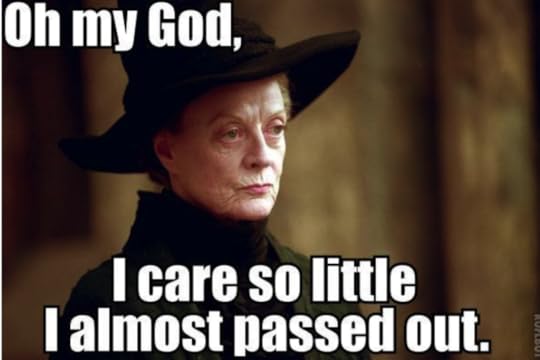
Drama is what makes us CARE.
When it comes to creating content, let’s first refine what I mean when I mention ‘drama.’ To do this, we’ll hop over to the definition of ‘drama’ via Merriam Webster (on-line), then skip down to definition #3.
Drama: a state, situation, or series of events involving interesting or intense conflict of forces.
Drama is all about conflict and TENSION (um, STORY). When it comes to writing, one of the main problems I see, with new writers in particular, is they create what I refer to as ‘soap opera drama’ also known as ‘melodrama.’
This is usually a long series of ‘bad things happening,’ and the characters are largely passive. They don’t learn, grow and decide they must change because they don’t really need to.
Can it work? Um, does THE WORLD TURN?
This type of drama (bad things happening) works really well for soap operas, namely because they go on pretty much forever.
Soap operas allow audiences be voyeurs into a world of beautiful, rich, and bored people with nothing better to do than keep stealing each other’s partners, discovering missing twins, plan corporate takeovers, and weirdly coming back from the dead every five or so years.
Land a job writing for daytime soaps or telenovellas? Melodrama is a staple. No one needs to arc (not in the same way), so a simple series of terrible events and limited personal growth is FINE.
FYI: ‘Soap’ operas earned this moniker for a reason. In the early days of radio and television entertainment, soap manufacturers would advertise to housewives during the midday hours. The networks needed stories that commanded interest, but remained simple enough women could keep cleaning and rely on listening.
The creators didn’t want a lot of depth and complexity because it made it too hard for their target audience to multitask.
To this day, most of the places I see soap operas played are venues where patrons are trying to perform multiple tasks—eat lunch, enjoy a pedicure and talk, get their hair colored and cut.
When we humans have to do more than one thing, then a complex plot will lose us.
So I am not casting judgement on soaps (I enjoy telenovellas to practice my Spanish). Just appreciate it is a VERY different form of storytelling.
Back to drama.
Whether it’s a podcast, a blog, a documentary, or even a ‘How-To’ video on YouTube, the ones that are the most successful add in elements of storytelling (drama) that hooks audiences and makes them want to come back for more.
It’s why successful podcasters, YouTubers, documentary stars, or bloggers (at least the ones who really stand apart) frequently do more than act as a simple conduit for information. They become personalities (Chef Gordon Ramsay, culinary expert Andrew Zimmern, expert fisherman/angler Jeremy Wade, survival expert Bear Grylls, etc.).
I was addicted to Ice Road Truckers. WHY? Because it was an unprecedented look into an unusual world and I CARED about the truckers as people. I was there for their story. If 25 years ago, someone would have told me a show about truck drivers would capture international interest? I would have thought they were bonkers.
Drama makes the difference.
When it comes to writing a NOVEL or a SCREENPLAY, however, we need a different form of bait. Authors and screenwriters are working with a finite amount of pages/time. This means, most of us need to rely another version of drama, known as dramatic tension.
What are some simple ways to keep turning up the heat and keep audiences wanting?
1.) Even Good People Do EPICALLY Stupid Things
This is a tough concept for a lot of writers, especially when we’re new. Want to be bored out of your MIND? Go back to some of my first blog posts.
Wait, you can’t. I’ve destroyed the evidence.
I was so scared and thought I needed to be all perfect and lecture-y (it’s a word, y’all). And I had ten followers. Two were my mom because she didn’t ‘get’ the internet—but was really wanting to support me—and the others were spam bots.
I am not making this up.
When I started my first WordPress blog, I actually thought Akismet was a person because he/she was my first commenter. Which I thought was AMAZEBALLS because I hadn’t even TOLD anyone about my blog and here this person with an odd foreign name (Asian? Russian?) was there to encourage me.
PROOF I was awesome.
Then, I wrote a reply to Akismet who then ghosted me. WTH?
And then…
I found out Akismet was the WP plug-in spam filter *face palm*
I…was…an idiot.
But, after a while, with my ‘two moms’ and 25 spam bots as followers? I lightened the hell up, and began to laugh at my mistakes, talk about my weaknesses, joke about thinking AKISMET was my first real fan.
And guess what? People (actual people) not HotCollegeGirlsCheapDesignerBags started commenting.
Remember this tenet in fiction, too.
We don’t connect with other people because of the crazy amazing things they are/do/accomplish. How many of y’all feel like you could be BFFs with Elon Musk or Scarlet Johannson? Not saying they’re ‘bad people.’ Probably super nice.
But, regardless how kind or wonderful these sorts of people might be…how approachable are they?
What about a mom with a toddler who won’t stop screaming in the store? A woman who’s crying in a bathroom stall because she can’t deal with her mom who’s suffering dementia? The guy who’s old truck just broke down, stranding him in the middle of a busy intersection?
What about those people? How much more natural is it to empathize/get involved?
In their weakest moments, we are most likely to get INVOLVED. See? Told you we’d get back to that word  .
.
It’s the same with characters. We bond because we empathize on some level. So feel free to be vulnerable. Yes, you. Sometimes we’re afraid to make our characters vulnerable because we’re terrified it might reflect on us.
When I was a n00b, all my characters were caricatures—brilliant, gorgeous, rich, wise…and utterly BORING.
Give all your characters weaknesses.
Bad decisions are the beating heart of great stories.If the tension is flagging in a spot, create a moment for a character to be fully human. Let them be afraid, selfish, evasive, ashamed, etc.
You’ll thank me later  .
.

A great way to generate drama (conflict) is to have a character mean well. Give them good intentions.
Maybe you’re writing a mystery, and there’s a critical piece of information the MC needs to solve the problem. BUT it would require another character to possibly divulge someone else’s shame/secret.
Another character means well when she fails to reveal her married best friend had a brief affair with the murder victim. She didn’t intend on having this sort of knowledge. But, though it could be (and probably should be) a key piece of intel, she runs interference so as to protect her friend’s reputation.
And she’ll likely do all the mental gymnastics of how this ‘information’ is irrelevant…until she can no longer live with herself and has to make the tough choices.
Is there a way for your MC, your BBT (core antagonist/villain—yes, even baddies can be sympathetic), another supporting character to mean well…only for it to be the worst thing they could do?
The mom who doesn’t want to tell her adult daughter she has cancer because she doesn’t want to spoil her wedding. A coworker who doesn’t want to mention that his project manager once fudged the books to cover up a single mom’s mistake so she’d keep her job. Maybe a simple peasant afraid to mention her neighbor has healing powers for fear that her friend might be executed for using magic.Y’all get the gist.
Get creative. People (characters) can do some pretty foolish/terrible stuff, all the while fully intending to do GOOD! Should your story start feeling flat, can someone withhold critical information? Maybe spill the tea on another person’s private trauma, struggle or shame?
Anytime the characters are having life too easy?
Toss a wrench at them.
3.) Drama is the Path Untraveled (OR Blocked)
Humans are notorious for taking the easy route, so here’s the hard truth. In life and in fiction, nothing interesting happens in the comfort zone.
The point of ‘story’ is to force the MC to take a road they never would have chosen without the inciting incident (then later external/internal prodding).
In fiction, everything should be tough. NOTHING should come easily…ever.
*gives scary eyes*
Your characters are willing to do ANYTHING…just not THAT.
Then make them do THAT.
Example:Say I’m writing a romance. I am riffing here, so…anyway.
My super wealthy love interest falls for a struggling actress he met when she was fired by the caterer at some fancy event. In the story, at some point, my couple comes together, then has the necessary falling out. She ditches him.
To succeed—find his true love—he must get directions to where she lives so he can make ‘whatever’ right before she accepts a marriage proposal from her ex (and childhood love) who claims he’s changed (stakes/ticking clock).
If this is the case? Then the only way forward has to be TOUGH.
Make it worse until you make it weird.I’d make the ONLY person who knows the intel (where gal lives) a person—that any other time before this moment in the story—he would have avoided like a room full of snotty toddlers.
Maybe? A homeless guy (also known as a threshold guardian). Then, I’d make sure this threshold guardian demanded my MC’s absurdly expensive shoes in return for information.
I need to ask myself, “How badly does my guy want directions?” Is he willing to turn over his $15,000 custom shoes and walk in his $900 socks through trash, broken glass and maybe discarded needles to find the woman he loves?
Why wouldn’t I simply have the homeless guy demand cash?Because that would be too easy for the MC. He wouldn’t have to openly compromise his pride.
Path untraveled? Being humble and unable to simply buy his way to what he wants. Sure, my wealthy guy has to pay, but not on his terms and in the way he’d least likely choose.
Also, if I’ve developed my female love interest who’s clearly from the ‘wrongest’ part of town possible, then that homeless man could be an ally. She’s kind to him, possibly a friend.
He becomes a deeper character because he knows ‘Rich Guy’ hurt his gal pal. His ‘easy road’ would be to simply shake ‘Rich Guy’ down for cash. But, since he’s a true friend, he wants to test if this dude’s love is genuine.
Double drama bonus there.
Drama Addicts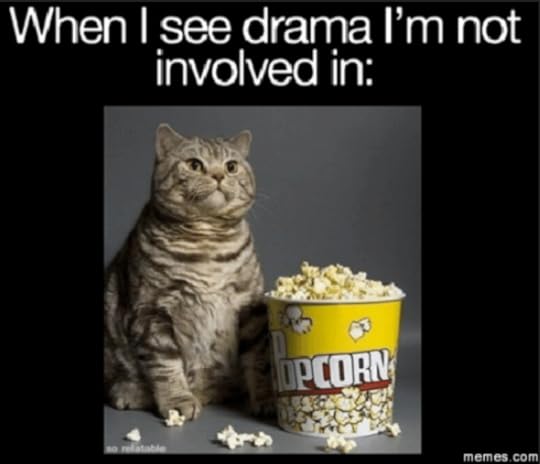
When we make the roads too easy, the choices too clear, the decisions too wise, we’re robbing the audience of a great experience. Good fiction involves personal growth—character arc—and we don’t call them ‘growing fluffy puppy kisses.’ NO! We call them ‘growing PAINS.’
So make ’em suffer. Audiences will love you all the more for it.
What are your thoughts? I LOVE hearing from you!What are some great stories (movies, film, series) you can think of that about killed you with the tension? Remember hating the writers and loving them too for making you suffer?
Do you struggle with making life/solutions too easy for your characters? Struggle with that sagging ACT TWO?
What are some shows you watched SOLELY because they added in a bit of story and made you CARE? ‘River Monsters’ is another one for me. It’s probably the only fishing show I’ve ever watched in the history of ever since I hate water and don’t eat fish…but I was hooked.
*bada bump snare*
I LOVE hearing from you!To prove it and show my love, for the month of NOVEMBER, everyone who leaves a comment I will put your name in a hat. If you comment and link back to my blog on your blog, you get your name in the hat twice. What do you win? The unvarnished truth from yours truly. I will pick a winner once a month and it will be a critique of the first 20 pages of your novel, or your query letter, or your synopsis (5 pages or less).
ClassesThe Edge: How to Write Mystery, Suspense & Thriller is available ON DEMAND (sign up HERE and use Thrill10 for $10 off). The recording turned out FANTASTIC, so check it out.
***More new classes will be available next post. I’ll also give winners for September and October. We’ve been dealing with power outages and tech issues so I am behind. Apologies.
The post Drama: Three Simple Ways to HOOK Audiences appeared first on Kristen Lamb.
October 29, 2021
How Horror Can Improve Our Writing in ANY Genre
 Image via Flickr Creative Commons, courtesy of Frederik Andreasson
Image via Flickr Creative Commons, courtesy of Frederik AndreassonHorror is in the HOUSE today…and over the weekend for many since, um, HALLOWEEN! So, today I’d like to talk about horror as a genre.
Horror gets a bad rap. Most people automatically default to brainless, low-budget slasher movies. People somehow forget that we can thank horror for some of the greatest works of literature from Mary Shelly’s Frankenstein to Bram Stoker’s Dracula to Shirley Jackson’s The Haunting of Hill House.
***For the record. Horror as a genre is still very much alive. It’s just that, after all the 70s slasher movies, these books have been re-shelved as speculative fiction. Books once listed as ‘horror’ we can now find under mystery, thriller, suspense, science fiction, paranormal fantasy, etc.
Horror has always pushed boundaries while shining a light on what we as a culture fear the most. If we can forget the chainsaws and college coeds who trip a lot, horror can teach us all how to be better authors…no matter which genre we write.
This genre fascinates me simply because (as I mentioned earlier), I believe it is the most difficult genre to write. Sure it was probably easier back in the days that movie audiences ran screaming from the man in a really bad plastic ant outfit. But these days? As desensitized as we have become? Unsettling people is no simple task.
That’s why I’d like to talk about it today because no matter which type of fiction we write, we can learn a lot from what horror authors do well.
Horror Evokes ReflectionPowerful fiction mines the darkest, deepest, grittiest areas of the soul. GREAT fiction holds a mirror to man and society and offers messages that go beyond the plot. A really great story should, ultimately lead to some form of self-reflection.
Elisabeth Kubler Ros once stated:
There are only two emotions: love and fear. All positive emotions come from love, all negative emotions from fear. From love flows happiness, contentment, peace, and joy. From fear comes anger, hate, anxiety and guilt.
It’s true that there are only two primary emotions, love and fear. But it’s more accurate to say that there is only love or fear, for we cannot feel these two emotions together, at exactly the same time. They’re opposites. If we’re in fear, we are not in a place of love. When we’re in a place of love, we cannot be in a place of fear.
This means, the more we understand fear, the deeper our writing becomes, the more meaningful, visceral, and profound. Yes, REGARDLESS OF GENRE.
In love stories, fear might be of being alone, of never finding ‘the one’ or even losing ‘the one.’ In literary fiction, the fear can be of remaining the same, or of regressing, or of failing to evolve and learn the critical lesson provided by the story problem.
Fear is the lifeblood of ALL fiction because conflict is always generated by fear.
The protagonist wants something BUT THEN… The more intense the fear? The higher the stakes become? The faster the reader turns the pages.
What Horror Says About Conflict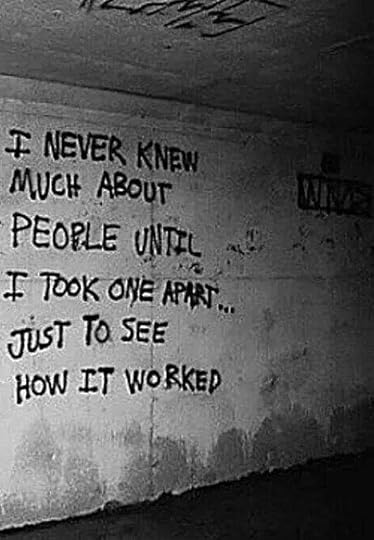
Here is where we need to be careful. There is a fine line between a bad situation versus authentic conflict. This line makes the difference between a meh novel versus something people hold onto and read and reread.
It is what makes the difference between a B horror movie that is utterly forgettable, versus a horror staple that endures for generations (Um, Dracula?).
In horror, bad situations can be monsters or an ax-wielding psycho, but, without authentic conflict added in, it quickly devolves into a sort of wash, rinse, repeat. Oh, he chopped up a teenager! Now two teenagers! Now he skinned them and danced in a woman suit made from their flesh!
This is the basest form of horror, the horror that depends on shock value (gore), and NOT the type of stories I am thinking of while writing this blog.
And before anyone says, “But that is horror, it doesn’t apply to me!” Be careful. I get a lot of new fiction that it is simply bad situation after bad situation—and another car chase—and the reason this falls flat is that the ‘badness’ is purely external. The characters are passively enduring ‘bad things happening’ and the writer leaves it there.
So what makes it conflict and not just a bad situation?
Monsters & Men
I liken humans to a tea cup. Whatever we are filled with is what will spill out when we are rattled. When the heat is on (story problem) do we rise to the occasion or is our darker self revealed? Or both?
A great example of this is Stephen King’s The Mist. Sure it is a monster story. Scary strange mist, creatures in the mist, tentacles, blood, OMG! And if King had made the focus of the story the aliens, we would have a pretty forgettable movie.
Oooh a giant tentacle!
What now?
A BIGGER TENTACLE!
What now?
Have it eat someone!
Oooh! And now?
Have it eat EVEN MORE people!
ZZZZZZZZZZZZ
Horror & TediumYou can clearly see how this would have become a seriously tedious story if it simply relied on a string of ‘worsening’ surface situations. But King is too smart for that. No, he appreciated what I talked about a moment ago.
Sure humans are a nice enough bunch so long as there is food and shelter and the power works. But take away the conveniences. Scare people, really scare them and we get to see who they really are.
***Yes I am thinking about every person who bought ALL the toilet paper last year when COVID hit O_o
We take that external problem and make it internal.The source of conflict in The Mist has far less to do with the aliens outside and much more to do with what that outside problem does to the people trapped in the grocery store.
We see the characters fall all along the spectrum. The ordinary and unremarkable cashier risking his life to help others contrasted against the ‘good church-going woman’ escalating to full scale cult leader (human sacrifice to appease the beasts outside included) in less than 24 hours.

The monsters inside become far scarier than whatever is outside.
If we think about it, this is what makes for a good ghost story, too. It is less about what the ghost is or isn’t doing and more about what it is revealing about those being tormented. A fantastic example of this is Prisoner of Hell Gate which I recommend any time, but especially for those already looking for some really great Halloween reading.
Strand a boat full of college students on an island where Typhoid Mary died…then sit back and watch the fireworks. Again, the horror is less to do with the island and more to do with what the peril brings out in the people.
I also recommend Dennis Lehane’s Shutter Island and Dean Koontz’s What the Night Knows.
These Lessons Apply to ALL Great StoriesBut as I mentioned, this ‘turning the external internal’ is the crux of all great fiction. Toss in a problem then watch what it does to the people around it. In Big, Little Lies (general fiction) a Kindergarten schoolyard rumor escalates to murder.
The story really has nothing to do with the murder and more to do with how a simple little rumor has the power to unstitch families and unravel lives. It is the rumor that brings out the best and the worst in people.
Fiction is about problems and then putting on the pressure.
The story problem serves as a crucible. We can make our story forge so hot it rivals the surface of the sun, but unless we toss the character(s) in it? Doesn’t matter how hot it is. It is our job (no matter the genre) to poke and prod and expose that which people fear.
Hone in on the pain points and THAT is what makes for dimensional writing—from the fear of outliving our children (Steele Magnolias) to the fear of being invisible/taken for granted (Fried Green Tomatoes) to the fear of crossing that threshold separating the child versus the adult (The Labyrinth).
Writers are brokers of fear  . Buuut, excellent horror shows us fear is only part of the recipe. We tap into what people fear BUT THEN show how fear can be harnessed for good.
. Buuut, excellent horror shows us fear is only part of the recipe. We tap into what people fear BUT THEN show how fear can be harnessed for good.
What are your thoughts? What are some of your favorite horror books/authors/movies? I am a HUGE Koontz fan.
I tend to like campy horror movies since not much really scares me. I LOVE The Babysitter, The Cabin in the Woods, Tucker & Dale vs. Evil, and Army of Darkness.
For those who maybe eschew horror, can you at least see how these tools might enrich your fiction?
I LOVE hearing from you!To prove it and show my love, for the month of NOVEMBER, everyone who leaves a comment I will put your name in a hat. If you comment and link back to my blog on your blog, you get your name in the hat twice. What do you win? The unvarnished truth from yours truly. I will pick a winner once a month and it will be a critique of the first 20 pages of your novel, or your query letter, or your synopsis (5 pages or less).
***I will announce September and October’s winners next post.
CLASSESThe Edge: How to Write Mystery, Suspense & Thriller is available ON DEMAND (sign up HERE and use Thrill10 for $10 off). The recording turned out FANTASTIC, so check it out.
***I will be listing new classes so check them out next post.
For those who need help building a platform and keeping it SIMPLE, pick up a copy of my evergreen (as in useful forever) social media/branding book Rise of the Machines—Human Authors in a Digital World on AMAZON, iBooks, or Nook.The post How Horror Can Improve Our Writing in ANY Genre appeared first on Kristen Lamb.
October 25, 2021
Hacking: The Secret Spice of Modern Storytelling

‘Hacking’ is a relatively new concept in fiction. It’s leapt from the realms of pure science fiction into everyday reality. This means understanding ‘hacking’ can be helpful in any number of genres from suspense/thriller to YA to general fiction.
Today is the final guest post from Piper Bayard of the dynamic writing duo, Bayard & Holmes. I really hope y’all pick up copies of their books. I’ve read all of them, even wrote the foreword in one.
I’ve added their books as staples in my reference library and strongly recommend y’all do the same (especially since one is on SALE).
Hackers! Take It Away, Piper!Most people think of computer invasions when they think of hacking, but any electronic item that transmits a signal can be intercepted and/or hacked.
That means cybersecurity is an issue for every one of us; therefore, unless we are writing historical fiction or some other genre that predates electronics, cybersecurity can a potential issue for any of our characters.
Volumes can be written regarding cybersecurity issues. Rather than offer a comprehensive treatise on the subject—which would no doubt be obsolete before dinner time—today, we’ll focus on common objects in the modern world that can be hacked to spice up our story lines.
Thriller is the genre most likely to involve ‘hackers.’ Image via suspense/thriller “Extraction”
Image via suspense/thriller “Extraction”So we’ll cut to the chase, so to speak, and look at the big picture first. If our character is using electronics to find someone, that character’s capabilities will depend on their nationality and the power of their government or underworld contacts to assist them.
Every allies from folks at the NSA to Anonymous to private security companies could be at their disposal. There are far too many variations to address in a single article, or even a treatise. Suffice to say more than one government has the capability of scooping up every electronic transmission in a given area.
More than one hacker can access everything from a home router to the Pentagon.
As Much or as Little as Necessary
With the vast array of capabilities, this means when, in a crunch, allies can either assist OR should you need a complication, be UNABLE to come to the character’s aid.
Bad guys can apply countermeasures.
Say we flip the coin and our character wants to try to HIDE from government surveillance on the part of any country in the West, Russia, or China.
A character’s best bet is to hide in plain site with a new identity. If that isn’t possible, they must go to an all-cash existence, never carry any electronics of any kind on their person, and avoid all cameras in businesses and on streets.
Since this is pretty close to impossible in First World countries at this point, it’s also best if the character stays on the move in Third World countries. However, human intelligence will still be a threat, and odds are better than good they will be found eventually.
What about a smaller/more intimate picture? Image courtesy of Daria Shevtsova on Pexels.
Image courtesy of Daria Shevtsova on Pexels.Most of us can look around our workspace and find items that can be hacked. Computers and phones are the most obvious.
We recommend that everyone put a sticky note over their computer camera, because entities from corporations to any number of governments to hackers can and will observe you without it being obvious to you. . . .
We’ll pause a minute for you to cover that camera . . .
Thank you. We feel better talking to you now that strangers can’t see you in your pajamas. If you want to be particularly cautious, cover camera on your phone, as well.
Speaking of cameras . . . Nanny cams, doorbell cameras, security cameras of all kinds, and children’s toys are also regularly hacked by unscrupulous individuals and used by governments foreign and domestic to record information on private citizens.
Why Would Hackers Care About ME? Most people think, “Why on earth would foreign governments want to digitally molest my nanny cam? I’m just not that interesting.”
Most people think, “Why on earth would foreign governments want to digitally molest my nanny cam? I’m just not that interesting.”Not to promote paranoia, but you actually are that interesting. These are only a few reasons foreign governments want to spy on you:
To spy on expatriatesTo monitor trends in societyTo improve training of deep-cover operativesTo better design propaganda efforts in foreign countriesTo gather information on possible targets for covert actionTo identify blackmail targetsTo build files on important foreignersYes, foreign governments use Internet devices to collect information on regular citizens to tailor their enormous propaganda efforts, and those data collections on have helped hostile nations level up substantially in their subversion tactics targeted at the West…but that is an article for another day.
Some Folks Just Wanna See the World BURN We are aware that our computers are open books for governments, both domestic and foreign, as well as hackers.
We are aware that our computers are open books for governments, both domestic and foreign, as well as hackers. A hacker can get into a computer and do anything that the computer’s owner can do. They can destroy everything on the device, pilfer through everything on the device, or plant spyware that will record every keystroke.
Computers are most vulnerable when connected to unsecured Internet networks, such as at coffee shops or in hotels, and hackers know this.
Great material for plot lines, right?
There are numerous companies that sell cybersecurity programs to help detect and protect from such attacks. Also, if a computer is turned off, it is safe from hacking.
Hackers and CELL PHONES Image courtesy of Lisa on Pexels.Phones are also common targets of governments, local police departments, and hackers.
Image courtesy of Lisa on Pexels.Phones are also common targets of governments, local police departments, and hackers.For example, everyone in the DC area can assume that all of their phone calls are being intercepted by the Russians and the Chinese. That’s true of several large cities in the US and Europe.
In addition to stationary devices, foreign agents, DHS (Department of Homeland Security), and local police departments literally drive around the city with “cell site simulators,” or “Stingrays” in their vehicles that simulate cell phone towers and intercept phone signals.
What’s a Character to Do? Doesn’t seem so crazy now, does it?
Doesn’t seem so crazy now, does it?There are two easy ways a character can protect the information on their phone. First, they can put their phone in a faraday bag, which is a bag made of a shielding material that blocks transmissions.
Another way is cheaper and faster than shopping—tin foil. Yes. There is something to the tin foil hat, or in this case, tin foil envelope.
To protect a phone, a character needs three layers of tin foil.
The first layer is smooth. They must be careful to wrap the phone thoroughly, leaving no open seams.
The second layer is crumpled. They crunch up the tin foil, unfold it enough to make it useful, and wrap it around the phone. Again, the character needs to pay attention to seams.
‘The third layer is another smooth layer over the crunched layer. Once the phone is wrapped, anything a hacker could get off of it would be so distorted that it would render the information useless.
This tin foil trick works for computers and key fobs, as well.
Yes, key fobs.Vehicles with keyless ignition systems, such as pretty much all rental cars these days, can be hacked from outside a building. This is called a “relay attack,” and it can be accomplished with cheap equipment found online or at an electronics store.
One character holds a key fob relay box close to the outside of a building. The box picks up the signal from an unprotected key fob inside and relays it to a second device that a second character holds near the car.
This fools the car, and the vehicle can be unlocked and/or started. Great for car theft, planting surveillance devices, or hiding in a back seat or trunk.
Deliciously creepy, right?
If written well, though, this hack could be used in a romance, and a lover could leave a gift on their beloved’s dashboard. Or perhaps a comedic situation could arise where a character stashed something in a rental car, and they need to get it back on the sly.
Alexa is Listening Another source for plots comes from voice-controlled speakers such as Alexa or a Smart TV.
Another source for plots comes from voice-controlled speakers such as Alexa or a Smart TV. Yes. Numerous governments and corporations really are collecting everything said within range of these devices.
Hackers can do the same.
Everything said within range of these devices is collected and transmitted to servers to be analyzed for “search words.” Sorry. This article is too short to discuss what can happen to all of the conversations collected that do not include “search words.”
However, such devices sometimes make mistakes. Voice-controlled speakers have been known to transmit conversations to random individuals on a contact list. For example, a couple can be having a conversation in range of their Alexa or Alexa-equivalent, and it can accidentally be transmitted to some random individual on their contact list.
Cross my heart and hope to die, this has actually happened in real life. The possibilities in fiction are endless!
 A more personal digital violation is becoming more common all the time. We’ll be as delicate as possible when describing this . . .Adults ONLY
A more personal digital violation is becoming more common all the time. We’ll be as delicate as possible when describing this . . .Adults ONLYTalk about violating privacy For REAL. There is a method of surveillance is called “screwdriving.”
When couples fall in love and become intimate, or they just want a hook up or whatever, sometimes they like to involve certain electronic implements . . . Oh, never mind. Sex toys. We’re talking about sex toys.
 Actual photo of screwdriving victim.
Actual photo of screwdriving victim.Sex toys often now connect to the Internet. The Internet connection allows couples to express their passions, even when they are at a distance, whether across town or across the planet.
Screwdriving is when hackers drive around and seek out these devices in the buildings around them. Hackers then hack the devices in the hopes of delivering a tingly surprise—a digital threesome of sorts.
The romantic and comedic possibilities are endless! Of course so are future episodes of Dateline.
These are only a few of the devices hackers target in real life and in fiction. Others are pacemakers, cars, fitbits, and any other electronic device that connects to the Internet or emits an electronic signal.
Apply imagination, and any of these can be a source of comedy, romance, crime, thrills..or plain terror.
Kind of like this blog.
Apologies.
Thanks for having me!
Wow…Um, Thanks Piper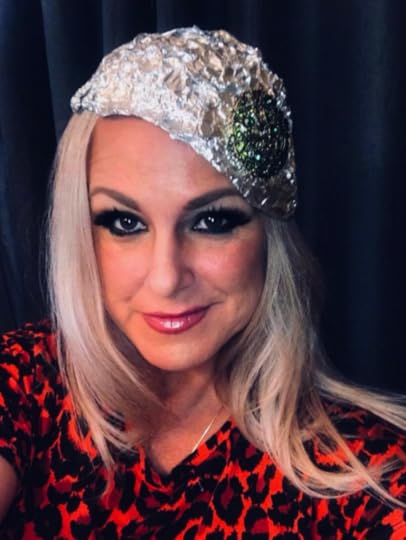 I’m always prepared…
I’m always prepared…So thank you, Piper, for this informative and utterly terrifying post.
In all transparency, Piper and I have been friends for almost 12 years. We bond over our healthy dose of paranoia and the NSA LOVES when we chat on the phone.
When the Alexas first came out, my brother bought everyone in the family Alexas for Christmas. It was an incredibly thoughtful gift…
…that I left in its box (buried in another box).
Then, my mom got Ringr and I had a FIT for a BIT…but can only preach so much.
I have a TON I could add to this post, but we’ll save that for another day since many of you might already be hiding in a three-layered tent made from emergency shock blankets (foil) eating cookie dough.
For now, The Edge: How to Write Mystery, Suspense & Thriller is available ON DEMAND (sign up HERE and use Thrill10 for $10 off). The recording turned out FANTASTIC, so check it out. This class pairs really well with everything Piper has talked about the past four posts.
I will be uploading more classes this week, and Piper will soon be teaching as well for Bad Lamb Academy. YAY!
We LOVE hearing From You!Have you used hacking in one of your plots? What genre was it?If y’all have any questions for Piper, this is the time. She’s here and available from her underground silo  .
.
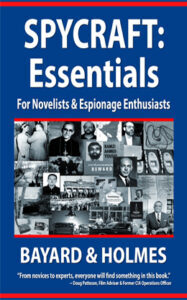 SALE!
FINAL DAYS ONLY $2.99 — Click Here
SALE!
FINAL DAYS ONLY $2.99 — Click Here
What do the main intelligence agencies do and where do they operate? How do they recruit personnel? What are real life honey pots and sleeper agents? What about truth serums and enhanced interrogations? And what are the most common foibles of popular spy fiction?
With the voice of over forty years of experience in the Intelligence Community, Bayard & Holmes answer these questions and share information on espionage history, firearms of spycraft, tradecraft techniques, and the personalities and personal challenges of the men and women behind the myths.
Though crafted with advice and specific tips for writers, SPYCRAFT: Essentials is for anyone who wants to learn more about the inner workings of the Shadow World.
“For any author, this is the new bible for crafting stories of espionage.”~ James Rollins, New York Times Bestselling Author of The Demon Crown
Piper Bayard and Jay Holmes of Bayard & Holmes are the authors of espionage tomes and international spy thrillers. Please visit Piper and Jay at their site, BayardandHolmes.com. For notices of their upcoming releases, subscribe to the Bayard & Holmes Covert Briefing. You can also contact Bayard & Holmes at their Contact page, on Twitter at @piperbayard, on Facebook at Piper Bayard, or at their email, BayardandHolmes@protonmail.com.
The post Hacking: The Secret Spice of Modern Storytelling appeared first on Kristen Lamb.
October 19, 2021
Silencers: Outside Hollywood Movies, Not Everything Can Be ‘Silenced’

Silencers. Yes, today our visiting expert, Piper Bayard from the writing duo Bayard & Holmes is here to do some myth-busting. The movie industry seems to believe one can use a silencer on everything.
***Yet another peeve for many who are even remotely knowledgable about the gun world and how things actually work.
I get that fiction is supposed to be over the top, especially with spies and thrillers. It doesn’t matter that most spies actually do boring office work and are usually as ‘sexy’ as our 6th grade librarian. Hollywood doesn’t care that most intelligence operatives and assassins are more likely to drive a Mazda than a Maserati.
In reality, drawing a lot of attention and being SUPER memorable is a BAD thing.
This said, we don’t care when it comes to fantasy. Spies and assassins are sexy in fiction. And it is TOTALLY possible to hold onto a bullet train traveling at up to 200 miles an hour….in fiction.
So how can we keep our fiction imaginative, over-the-top and sexy AND gain at least a modicum of respect from those who are savvy about this topic? *drum roll* Well this THURSDAY y’all can take my class The Edge: How to Write Mystery, Suspense & Thriller (sigh up HERE). This is a TWO-HOUR class and obviously we can go into a lot of detail. You also get a free recording, which is super handy.
For the moment though? Here’s a quick fix to help you maintain the magic without blowing your cover credibility.
Take it away, Piper!
Movies and books do absolute magic with firearms and their targets! Sniper rifles fire with a whisper, bodies silently crumble to the ground, assassins shoot successive shots from silenced pistols without a hiccup, and all other manner of . . . fictions.
In our last post, Firearms: The Writer’s Guide to “Knowing Your Weapon! we looked at the various types of firearms espionage and crime characters might use and took a bit of the fiction out of fiction. Now let’s turn our attention to silencers and what cannot be silenced. For simplicity’s sake, we will use the terms “suppressor” and “silencer” interchangeably.

The purpose of silencers in the field is to keep anyone from recognizing the sound of a gunshot and screaming, calling 911, or returning fire.
In most cases, the shooter doesn’t care if someone hears the shot as long as they don’t recognize it as a shot. People will normally ignore noises that they hear but don’t associate with gunshots or other dangers. Because of this human tendency, the level of “silencing” our characters need with their firearms depends on their situations.
For example, if a character intends to walk into a functioning steel mill and shoot someone, they don’t need much in the way of silencing. On the other hand, if they want to shoot someone in a library without being noticed, they will want the best silencing available.
So how do we attain maximum silencing?We’ve all seen characters with cylindrical silencers screwed onto the barrels of pistols which, in fiction, range in size from a Saturday night special to Dirty Harry’s .44 Magnum. Then they fire with a pftzzz so quiet that it wouldn’t wake a drowsy guard dog. But a silencer on the barrel is only the first step. For maximum silencing, one must also consider the things that cannot be silenced.
A Silencer Can’t Quiet a SlideSuppressors can be used on revolvers, but with much less effect than can be achieved with a semiautomatic pistol; therefore, a shooter would most usually use a semiautomatic handgun. (See Firearms: Know Your Weapon!) Semiautomatic pistols have a slide along the top.

This pictured .40 Smith & Wesson has the slide locked open. Note the round in the chamber. The slide comes back when a shot is fired. The spent brass is ejected, another round is fed in, and the slide comes forward, readying the pistol for the next shot.
This motion of the slide can’t be silenced.
So what is a shooter to do?When it comes to dealing with slides, size matters, so let’s talk about size for a moment.
Ever wonder why Bond always uses the Walther PPK .380 in the field? It’s not just because it’s cute and German. It’s because the .380 semiautomatic provides enough energy for close-up assassination while still being capable of effective and inexpensive silencing.
In fact, the only more powerful mass-produced auto-loading weapon that can be efficiently and cheaply silenced is the Russian knockoff of the Walther PPK, the Makarov .380, which is like a regular .380 on steroids.
With a bullet slightly wider and heavier than that of the standard .380, the Makarov has the maximum energy of any subsonic cartridge that the Soviet firearms specialists could put into a straight blowback semiautomatic design.
***We’ll get back to that “subsonic” part in a moment.The other benefit of the .380 is that it has a straight blowback design, unlike larger handguns. With the straight blowback design, the pistol can be modified to manually lock the slide in a closed position so the weapon can fire without causing the rounds to jam. The locked slide prevents the noise of the slide operation along with the sound that escapes the ejection port when the pistol cycles.
The slide of a semiautomatic cannot be silenced except by locking it in place.So you might be wondering at this point how anyone gets to fire a second shot if the slide is locked in place.
To fire successive shots in real life, a shooter of a silenced pistol must manually unlock the slide, cycle out the cartridge, and then re-lock the slide. Locking and unlocking is accomplished with a small lever that would resemble the safety lever on a slide. With a bit of practice, a pro can operate it in approximately one second without much effort.
While a pistol with a manual slide lock does not allow for the quickest successive shots, it can be quite discreet, making it ideal for some situations.
For example:if the shooter intends to assassinate an individual who is walking home on his usual route after work, the shooter could get a close-up head shot on a side street, and someone walking twenty yards ahead of the target would not notice it.
Another example is if the shooter catches the target alone in their hotel room, home, or office. In such circumstances, a trained assassin could easily take the time to deliver a second “insurance” shot on a high-value target without a hotel maid in the hallway or people in the next room hearing anything.
Writing Tip Regarding Silencers:One danger to silencing properly with a handgun is that the shooter will forget to lock the slide after cycling in the second round. The weapon will still be suppressed, but it will still make more noise than it would if the slide were locked. If you need a character to make a mistake while firing with a silencer, this is a logical one to make.
The Sonic BoomNote the emphasis on the word “subsonic” in the section above. That’s because the crack of a bullet breaking the sound barrier is impossible to silence. That is true no matter what firearm or suppression equipment is used. As a result, for the maximum silencing, it is important to use subsonic cartridges.
The Falling BrassThe sound of falling brass is also impossible to silence. Only shooters in movies don’t have to worry about that ping of flying brass hitting objects or the floor. To prevent the brass from falling, shooters can carry specially designed brass catchers that they can attach to the pistols.
However, the act of attaching them can slow down a shooter. Also, the catcher, itself, is one more piece of evidence that can be found on a shooter, and less evidence is always better.
A more down-and-dirty trick, so to speak, is to use a sock as a brass catcher. However, there are three problems with this method. First, it blows out the end of the sock, which could lead to the brass falling anyway. Second, the sock could catch in the slide and jam it. And third, the sock covered in gunpowder and residue is one more piece of evidence. So as a general rule, most professionals risk the sound of falling brass.

But isn’t the brass evidence?
Not so much as one might think. That’s because an intelligent professional uses “clean brass.” Clean brass is brass that would not be identified to the country of origin, and it would have no fingerprints, so the shooter doesn’t have to worry about leaving it behind.
The Falling BodyThe third thing that cannot be silenced is the sound of a falling body. Dead bodies drop, and they aren’t always conveniently located in an open space with a thick carpet. They can smash into furniture and knock things over. They can break glass and thump into floors and walls. If in a bathroom and the body falls against a cast-iron tub, it makes a loud, heavy ringing sound.
Catching a body to prevent the noise of the fall poses the equally risky problem of the shooter being covered in blood. Bloody people tend to have trouble blending in when walking out of a building or down a street. It’s just an inconvenient truth that bodies fall where they die.
Writing Tip:An assassin’s inconvenient truth is an author’s plot line. While you could have dead bodies collapse in neat little heaps on a shag rug, you could also use them to punch up your plot. Get creative. Let them break things, tip out of windows, fall onto hot stoves, or even create a domino effect that leads to widespread disaster on the set. You’re not likely to go too far with it.
Bottom Line about Silencers:Three things cannot be silenced—the shells being ejected, the crack of the sound barrier, and the drop of a falling body. Which brings us to the fourth thing that cannot be silenced—the savvy reader who sends angry e-mails if an author gets this wrong.
Thank you, Piper!Piper has one more post in this series later this week. Make sure to ask any questions you might have about your work in progress or even about something you might be pondering for NaNoWriMo while she’s here. Now is the time to be bold. Also make sure to check out the new classes below. The podcasting bundle is still available. We had a FABULOUS first class so the ON Demand of that will come with the bundle is the only difference.
Another NOTE: I also moved my Log-Line workshop to THIS WEDNESDAY because I was losing my voice last week. So if you want to get your book/series boiled down into ONE sentence to act as a prototype or to pitch to an agent? Sign up and you get two hours working with ME!
Back to spies, assassins and other people who like to wear a lot of black…
Do your characters use silencers? What sort of problems do your shooters have with sounds? SALE!
LIMITED TIME ONLY $2.99 — Click Here
SALE!
LIMITED TIME ONLY $2.99 — Click Here
What do the main intelligence agencies do and where do they operate? How do they recruit personnel? What are real life honey pots and sleeper agents? What about truth serums and enhanced interrogations? And what are the most common foibles of popular spy fiction?
With the voice of over forty years of experience in the Intelligence Community, Bayard & Holmes answer these questions and share information on espionage history, firearms of spycraft, tradecraft techniques, and the personalities and personal challenges of the men and women behind the myths.
Though crafted with advice and specific tips for writers, SPYCRAFT: Essentials is for anyone who wants to learn more about the inner workings of the Shadow World.
“For any author, this is the new bible for crafting stories of espionage.”~ James Rollins, New York Times Bestselling Author of The Demon Crown
Piper Bayard and Jay Holmes of Bayard & Holmes are the authors of espionage tomes and international spy thrillers. Please visit Piper and Jay at their site, BayardandHolmes.com. For notices of their upcoming releases, subscribe to the Bayard & Holmes Covert Briefing. You can also contact Bayard & Holmes at their Contact page, on Twitter at @piperbayard, on Facebook at Piper Bayard, or at their email, BayardandHolmes@protonmail.com.
Classes!Writing for Podcasting 10/22/21Register HERE and use New20 for $20 off before October 15th
How to Make MONEY & The Business of Podcasting 10/26/12Register HERE and use New20 for $20 off before October 15th
The Pod People Podcasting Bundle: ALL THREE Classes ONE Low PriceRegister HERE to get all three classes and save BIG! The ON DEMAND version of “Introduction to Pod Casting” is included since we passed the LIVE class date.
Practice Your Pitch: Master the Log-Line 10/20/21Register HERE and use Pitch10 for $10 off if register by 10/1/21
The Edge: How to Write Mystery, Suspense & Thriller 10/21/21The post Silencers: Outside Hollywood Movies, Not Everything Can Be ‘Silenced’ appeared first on Kristen Lamb.
October 15, 2021
Firearms: The Writer’s Guide to “Knowing Your Weapon!”

Firearms are a staple in many different genres of fiction. Choosing a genre is critical because it makes it far easier to define your audience, connect with them and ultimately, sell more books. Here is a post that explains all the different genres, as well as the nuanced differences.
Firearms are obviously most commonly used in thrillers, but they can be used in mystery, suspense and all the varied kissing cousin genres. For those who want to learn more, I have a class next week The Edge: How to Write Mystery, Suspense & Thriller where I will also cover more on this topic (register HERE).
Today, however, we’ll defer to the serious experts. Piper is here on behalf of the fabulous Bayard & Holmes to download some critical information.
Take it away, Piper!
Know Your FirearmWhether you love firearms, hate them, or can take them or leave them, they are a staple of crime and thriller fiction. Unfortunately, fiction is often laden with firearms fictions. Bayard & Holmes are dedicated to helping authors avoid those firearms fictions, so we’ll take a look at the firearms that turn up most often in espionage and crime fiction—the revolver, the semi-automatic, and the automatic.
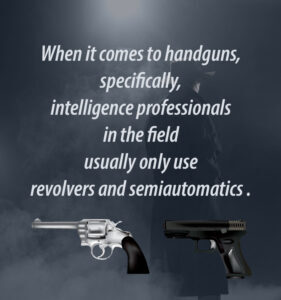
Before we get to the differences in those types of handguns, though, we need to address the most common firearm misnomer of all time — the “clip” vs. the “magazine.” Time and again in fiction, shooters are reloading their “clips” into their “automatic” pistols, when they should be loading their “magazines” into their “semiautomatics.” Let’s take a look at the distinctions so that you savvy folks will never make those mistakes.
Clip Vs. MagazineA magazine has a spring that force-feeds the ammunition as the shooter fires. A clip does not have a spring or a feed mechanism. It simply holds the ammo and attaches to a magazine or inserts directly into a firearm. These are examples of “clips.”
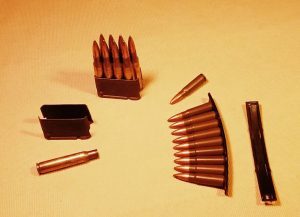 Image by Piper Bayard
Image by Piper BayardOn the left half of the picture, we have an empty M1 Garand clip, an M1 Garand clip loaded with eight rounds of 30-06 ammunition, and the brass from a 30-06 spent cartridge. On the right half of the picture, we have nine rounds of 7.62×39 ammunition loaded onto a “stripper clip” and an empty stripper clip. This stripper clip holds ten rounds. The tenth 7.26×39 cartridge is just above the loaded clip.
The clips are plain metal with no springs or gadgets of any kind that assist in feeding the ammunition through the firearm. Once the cartridges have been fired, the clips can be reloaded. However, in combat that is highly unlikely. A clip would normally be discarded and a new clip loaded into the magazine or the magazine well, depending on the firearm.
The vast majority of firearms made after WWII do not use clips.Extremely few modern weapons that use clips are being manufactured today unless they are replicas of old weapons, with the rare exception of a few Smith & Wesson revolvers that use moon clips. So unless your character is using a historical weapon or one of the rare modern firearms that take actual “clips,” the terminology is a fiction.
Next we have “magazines.” Magazines are widely used in both handguns and rifles. They can be detachable or not. They hold cartridges and can be quickly and easily reloaded. There are springs in the magazines that assist in feeding the ammunition through the firearms.
 Image by Piper Bayard
Image by Piper BayardThe larger magazine in the picture is an “extended grip” 9mm SIG Sauer magazine, and the smaller magazine is from a Smith & Wesson Bodyguard .380. These magazines fit into the handles of the pistols shown. Magazines are made of metal or plastic and can be reused countless times. They don’t get “used up” just because all of the rounds are fired.
Writing Tip:If you’re writing historical fiction, you might, indeed, have a weapon that uses a clip. If you are writing anything post-WWII, your weapon, unless it is a revolver, will likely have a magazine. We recommend you do a bit of research on the specific model of weapon in your manuscript, including the year it was made.
RevolversA revolver is so called because the cartridges reside in a revolving cylinder.
Almost no revolver ever made has an actual manual safety mechanism. Like the semiautomatic, one trigger pull equals one shot. However, the brass shells are not ejected automatically. A shooter must open the cylinder and eject all of the shells simultaneously and reload. A shooter can hasten this process by using a “speed loader” to insert all of the cartridges with one motion. The legalities of revolver ownership vary from state to state, but revolvers are generally the most legally accepted of handguns.
 Piper with Holmes’s .44 Magnum revolver, posing for the remake of Dirty HarrietThings to remember about revolvers:Ammunition is loaded into a cylinder.Revolvers virtually never have manual safety mechanisms.One trigger pull results in one shot.No brass is ejected.Legal in varying degrees according to state law. Semiautomatics
Piper with Holmes’s .44 Magnum revolver, posing for the remake of Dirty HarrietThings to remember about revolvers:Ammunition is loaded into a cylinder.Revolvers virtually never have manual safety mechanisms.One trigger pull results in one shot.No brass is ejected.Legal in varying degrees according to state law. SemiautomaticsWith a semiautomatic, ammunition loads into a removable magazine that usually fits into the pistol grip, like the ones pictured above.
To reload, a shooter drops the empty magazine out of the grip and snaps in a full magazine. Most people are able to drop a magazine and snap a new one into a semiautomatic faster than they can reload a revolver; however, a skilled shooter is just as quick with a speed loader. Like the revolver, one trigger pull always equals one shot. Unlike the revolver, the brass is ejected with each shot. Also unlike the revolver, a semiautomatic often has a manual safety device.
Semiautomatics are legal in all states, but only to varying degrees in different places. In a few states, they practically come as prizes in the bottom of Cracker Jack boxes, while in others, they are more difficult to obtain than a straight answer from a politician.
It is extremely common for a semiautomatic to be inaccurately referred to throughout media, movies, and TV as an “automatic” weapon. No matter how hot the journalist, movie star, or soap opera star might be, it simply isn’t so. If you make that mistake in your own writing, you are sure to get a bursting inbox full of corrections.
Things to remember about semiautomatics:Ammunition is loaded in a magazine.One trigger pull equals one shot.Often has manual safety mechanism.Brass is ejected, usually to the right of the weapon, every time a shot goes off.Legality varies according to state. Some states make semiautomatics difficult to obtain, or they restrict the size of the magazine. Other states have the Cracker Jack Box standard. AutomaticsWith an automatic weapon, the cartridges load into a removable magazine. The weapon is called automatic because when a shooter pulls the trigger, it automatically fires repeated bullets until the shooter takes their finger off the trigger. When the shooter fires, the brass shells of the cartridges are ejected from the weapon at high speed.
 Gunner’s Mate 1st Class Montrell Dorsey with
Gunner’s Mate 1st Class Montrell Dorsey withM240B automatic weapon
Image by US Navy, public domain
Modern automatic weapons are generally illegal for private ownership without special government procedures—emphasis on “generally.” There are three ways an individual in America can obtain an automatic weapon. . . .
The Firearm Owners Protection Act of 1986 made it illegal for private individuals to acquire fully automatic weapons without special permission from the Bureau of Alcohol, Tobacco, and Firearms. Private gun owners can still obtain one of the pre-1986 fully automatic firearms if they fill out a form, wait several months, secure a tax stamp, and purchase the firearm for an exorbitant amount of money—exorbitant because, according to the National Rifle Association, there are only around 150,000 pre-1986 fully automatic weapons in private ownership.
The second way private individuals can obtain an automatic weapon is by going through the intense process of obtaining a license to manufacture Class III/NFA firearms. Once the individual has this license, they can secure a conversion kit to modify a semiautomatic rifle to make it fully automatic. With the hassle and expense, though, we recommend using the money for a nice beach vacation rather than pursuing one of these weapons.
The third way to obtain an automatic weapon in America is the timeless and ever-popular method known as theft. If your characters try this method, especially with anyone who owns an automatic weapon, that owner might remember to use it on your character.
Things to remember about automatics:Ammunition is loaded in a magazine.One trigger pull equals multiple shots.Likely has a safety mechanism.Brass is ejected as the shooter is firing.Illegal for private owners everywhere in the United States except with a very detailed, expensive process.Other FactorsIt’s worth noting that different types of ammunition and barrels impact accuracy and are used for different purposes.
For example, Bayard & Holmes use hollow point cartridges for self-defense because the bullets are less likely to pass through the target and harm someone behind them. Different barrels with different types of rifling are also used depending on the purpose at hand.
Firearms experts have written treatises about the many subtleties of ammunition and barrels. If you discuss types of ammunition and barrels in your fiction, we recommend you read one of these treatises before you commit your writing to stone or Kindle. If you make a mistake, firearms experts will call you on it, and they can be pretty rough about it.
Writing Tip:Be aware that no matter how much you research, there are firearms aficionados who will write to you about the rarest and most obscure exception to whatever you say and tell you that you’re stupid. Don’t let that bother you. It’s what they live for. Be reasonably diligent in your vocabulary, hit the big things like “revolver,” “semiautomatic,” “automatic,” “clip,” and “magazine,” and you can be pretty sure the vast majority of your readers will be satisfied. As for the rest, don’t feed the trolls.
Thank You, Piper!I love these action-packed genres and I’ve lost count how many times I’ve encountered otherwise great books that botched their gun research. One time, I tossed a book across the room when the character put the safety on her revolver *silent screams*.
If we are going to put anything in our books, firearms included, then we need to do at least the basic research…which is why I have posts like this to help!
We LOVE Hearing From You!Any thoughts or questions? Piper is here to help y’all out so ask away.
Do your characters carry or use firearms? Which firearms do they use? What are your firearms pet peeves in fiction? Do you have any questions for us? SALE!
LIMITED TIME ONLY $2.99 — Click Here
SALE!
LIMITED TIME ONLY $2.99 — Click Here
What do the main intelligence agencies do and where do they operate? How do they recruit personnel? What are real life honey pots and sleeper agents? What about truth serums and enhanced interrogations? And what are the most common foibles of popular spy fiction?
With the voice of over forty years of experience in the Intelligence Community, Bayard & Holmes answer these questions and share information on espionage history, firearms of spycraft, tradecraft techniques, and the personalities and personal challenges of the men and women behind the myths.
Though crafted with advice and specific tips for writers, SPYCRAFT: Essentials is for anyone who wants to learn more about the inner workings of the Shadow World.
“For any author, this is the new bible for crafting stories of espionage.”~ James Rollins, New York Times Bestselling Author of The Demon Crown
Piper Bayard and Jay Holmes of Bayard & Holmes are the authors of espionage tomes and international spy thrillers. Please visit Piper and Jay at their site, BayardandHolmes.com. For notices of their upcoming releases, subscribe to the Bayard & Holmes Covert Briefing. You can also contact Bayard & Holmes at their Contact page, on Twitter at @piperbayard, on Facebook at Piper Bayard, or at their email, BayardandHolmes@protonmail.com.
CLASSES!TONIGHT! Introduction to Podcasting 10/15/21Register HERE
Writing for Podcasting 10/22/21Register HERE and use New20 for $20 off before October 15th
How to Make MONEY & The Business of Podcasting 10/26/12Register HERE and use New20 for $20 off before October 15th
The Pod People Podcasting Bundle: ALL THREE Classes ONE Low PriceRegister HERE to get all three classes and save BIG!
Practice Your Pitch: Master the Log-Line 10/20/21Register HERE and use Pitch10 for $10 off if register by 10/1/21
The Edge: How to Write Mystery, Suspense & Thriller 10/21/21Register HERE and use Thrill10 for $10 off if you register by 10/14/21
The post Firearms: The Writer’s Guide to “Knowing Your Weapon!” appeared first on Kristen Lamb.
October 12, 2021
Fight Scenes: Deep Cover & How to Write the Good Fight

Fight scenes are essential when it comes to so many genres, which is one reason that one of my all-time favorite courses I’ve ever taught was Bulletproof Barbie. The second reason that was my favorite class? As an editor and avid reader, nothing can make or break a story—on the page or on the screen—like fight scenes. Do them well, and it’s fuel to get the blood pumping. Botch the fight scene? And…
*sound of record screeching*
Even the WAY our characters fight can mean the difference between making them likable or unlikable.
Though I am always happy to teach on this topic, today we have a guest expert, Piper Bayard from the writing duo Bayard & Homes.
Take it away, Piper!
How toA great fight scene is arguably the heart of every thriller. We all have our favorite ways of doing violence–in fiction, of course–but our stories are most interesting if we never use the same attack method twice in the same book. As a result, we fiction writers are always looking for a new twist on a fight scene.
 Note the bottles in their hands. They are armed.
Note the bottles in their hands. They are armed.Since Jay Holmes of Bayard & Holmes is a 45-year veteran of the military and intelligence communities, we are often asked what weapons we prefer for fights. As Holmes says, “My favorite weapon is my radio. I use it to call in air strikes.” However, in lieu of having the US Air Force in our backpacks, we writers can ‘punch up’ our fight scenes by using common objects as weapons.
We could give you a list of common objects that can be used as weapons, but that would actually limit you. That’s because with the right attitude, virtually anything can be used as a weapon. Which brings me to attitude—the first ingredient to surviving a fight.
Attitude & the FightMy husband (not Holmes) literally has to teach karate black belts self-defense because skill with punches, kicks, and weapons is irrelevant if a person doesn’t understand the kill-or-die mindset that is so often necessary to survive a battle outside of a refereed ring. In other words, the most important weapons a character brings to a fight are their heart and their mind.
They must be determined to do whatever it takes to keep themselves safe and disable or kill their opponent. Once they see the world in those terms, potential weapons are everywhere.
Before we continue, the recovering attorney in Piper demands that we make it clear that this post is not meant to be formal instruction in self-defense.In truth, we advocate firearms training for the best self-defense, but shooting too many people in books tends to make for boring books. So we’re going to explore a bit more about common objects as weapons—strictly for the purposes of writing fictional fight scenes.
If we can stab with it, it’s a weapon. If we can jab with it, it’s a weapon. If we can use it to hit someone, it’s a weapon. If we can throw it, it’s a weapon.When we think of a fight in this new way, almost everything in our environment is a potential weapon. Holmes and I have literally killed off people in our books with a cactus, knitting needles, and a sheep. To be fair, the sheep was an active participant, but you get the idea.
Let’s do an exercise right now. I’ll do it with you.Let’s look around our immediate environment and ask ourselves these questions:Can I stab with it?The pens and pencils here on my desk can stab out an eye or puncture a jugular vein.
Can I jab with it?These handy thought facilitators, a.k.a. desk toys, could jab an eye, throat, or a groin to give me a fighting advantage. This newspaper can be rolled up tight and jabbed into a groin, a kidney, or an eye.
 My actual jabbing weapons.Can I hit with it?
My actual jabbing weapons.Can I hit with it?The pottery lamp could double as a bat, or my computer could be the extra weight and reach I need to land a blow. . . . I know what you’re thinking. Yes. My computer really is old enough to be a heavy weapon. I’m going to use it as a brick in a custom design in my house someday.
Can I throw it?Books! And look . . . My first manuscript. No one has survived that one. This glass elephant or the heavy glass pencil cup should be good for a concussion, or at least a distraction so that I can grab the lamp. . . . And there’s a cup of hot tea!
We’re going to pause a moment to consider hot beverages. Hot beverages are the versatile pay dirt of social interactions, including a good fight. Since one ‘picture’ is worth a thousand words . . .
One of my acquaintances—a seriously bad@$$ retired French Foreign Legion guy who we’ll call “T”—owns a bar in Texas. One night, a couple of men were causing trouble with the clientele, so he booted them out. When he closed down the bar, he armed himself in case the two undesirables were hanging out for another round of unpleasantries. He poured two cups of coffee.
Wait! Coffee? . . . Wouldn’t this bad@$$ grab something more impressive like nunchakus, a knife, or a gun?Nope. Just coffee. Sure enough, the idiots tried to jump T between the building and his car. T threw the steaming coffee in their eyes and took out their knees with a couple of kicks while they screamed. . . .
The lesson? Never underestimate the power of a hot beverage.
The hot beverage container can also be an effective weapon. My husband carries his metal mug with him everywhere he goes. It can be used to block a knife or strike an opponent . . . Coffee. Never get in a fight without it.
 Innocent romantic beverages,
Innocent romantic beverages,or opening salvo of a lethal attack?
You decide.
Extra Credit Challenge: As you go through your day, look around each space you enter, study your environment, and repeat the above questions to yourself. You’ll be amazed to be surrounded by so many weapons.
Now that we have a weapon, where do we strike?Anywhere we can. It’s all well and good to imagine a nice Hollywood fight where we grab a kitchen knife and slide it perfectly between the ribs and into the heart of a bad guy who is holding still for us. In real life, attackers aren’t usually so accommodating. It’s much more effective to keep in mind some sensitive body parts and go for whatever openings present themselves in that split second.
Eyes are at the top of the list of sensitive parts. Some bleach, salt, coffee, sand, or anything else that can be painful, and blinding an opponent (even temporarily) is always a good move.
We might ask why the groin is not at the top of the list.The groin is a great target. However, people, particularly men, are quite adept at protecting their tender bits, so the groin shot might not be the easiest blow to land.
Other key body parts that can distract or disable if impacted are the ankles, shins, knees, kidneys, solar plexus, ears and the throat. And of course, there’s a good old-fashioned blow to the temple, which can be lethal. Keep in mind that any blow that is hard enough to cause the head to turn is more likely to produce a concussion or even death than a blow that does not spin the head.
Now that we’re actually in the struggle, I’ll reiterate that the most important weapons are the heart and mind.
Don’t be set on any one move. Instead, go with the fight and take the shots that present themselves. Be aware that one jab won’t be enough. Follow through, and don’t stop just because they fall—they won’t necessarily stay down. Our characters must be willing to stay on the opponent until they are clearly dead or disabled, and recovery isn’t an option.
Bottom Line:A fight for survival can be the most creative part of a book. Just remember to stab, jab, whack, or throw, and don’t stop until the opponent is clearly dead or at least completely down for the count.
Thank you, Piper!What’s funny is I LOVE horror movies, campy ones in particular. The movie The Babysitter is not only AWESOME, but it is a fabulous study of how to use everyday objects to evade, escape, defend and even attack. Why I love this movie in particular is the MC is a 12-year-old-boy who’s hopelessly bullied. Let’s say, Jason Bourne he is not. But when this kid fights back against a murderous cult literally out for his blood?
He is BRILLIANT!
Other than The Bourne Identity, another great movie to study is The Accountant to see in action—bada bump snare—what Piper has described in this blog. In The Accountant there are actually some excellent scenes where the MC uses—YES—his coffee thermos to inflict major damage.
We LOVE Hearing from You!What common objects did you find that could be used as weapons? Do your characters have any particular ‘weapons’ they prefer? SALE!
FINAL DAYS ONLY $2.99 — Click Here
SALE!
FINAL DAYS ONLY $2.99 — Click Here
What do the main intelligence agencies do and where do they operate? How do they recruit personnel? What are real life honey pots and sleeper agents? What about truth serums and enhanced interrogations? And what are the most common foibles of popular spy fiction?
With the voice of over forty years of experience in the Intelligence Community, Bayard & Holmes answer these questions and share information on espionage history, firearms of spycraft, tradecraft techniques, and the personalities and personal challenges of the men and women behind the myths.
Though crafted with advice and specific tips for writers, SPYCRAFT: Essentials is for anyone who wants to learn more about the inner workings of the Shadow World.
“For any author, this is the new bible for crafting stories of espionage.”~ James Rollins, New York Times Bestselling Author of The Demon Crown
Piper Bayard and Jay Holmes of Bayard & Holmes are the authors of espionage tomes and international spy thrillers. Please visit Piper and Jay at their site, BayardandHolmes.com. For notices of their upcoming releases, subscribe to the Bayard & Holmes Covert Briefing. You can also contact Bayard & Holmes at their Contact page, on Twitter at @piperbayard, on Facebook at Piper Bayard, or at their email, BayardandHolmes@protonmail.com.
Classes!Introduction to Podcasting 10/15/21Register HERE and use New20 for $20 off before October 5th
Writing for Podcasting 10/22/21Register HERE and use New20 for $20 off before October 15th
How to Make MONEY & The Business of Podcasting 10/26/12Register HERE and use New20 for $20 off before October 15th
The Pod People Podcasting Bundle: ALL THREE Classes ONE Low PriceRegister HERE to get all three classes and save BIG!
Practice Your Pitch: Master the Log-Line 10/20/21Register HERE and use Pitch10 for $10 off if register by 10/1/21
The Edge: How to Write Mystery, Suspense & Thriller 10/21/21Register HERE and use Thrill10 for $10 off if you register by 10/14/21
The post Fight Scenes: Deep Cover & How to Write the Good Fight appeared first on Kristen Lamb.
September 30, 2021
Is Podcasting the New Blog?

Podcasting obviously isn’t a good fit for everyone, but writing, branding, and life are not One-Size-Fits-All. I’ve made it my personal mission to not only help writers hone their craft (great books sell better than rambling crappy books), but also to demystify branding.
I GET that most writers are also working a full-time job and already struggling with the whole ‘adulting’ thing. It’s why I hope to give y’all ways to work smarter not harder.
I’ve fallen in love with blogging. It’s been an incredibly good investment of time. It’s taught me to write leaner, meaner, faster and cleaner, and it’s also a form of ‘social media’ that gives back a lot of love. Seriously, two weeks ago I got a 500-word comment off a post I published in 2011! A post with 306 comments and climbing.
If that isn’t bang for the buck (time)? I don’t know what is.
This said, nothing great happens in the comfort zone. There was a good reason ViacomCBS sold off the former publishing GIANT Simon & Schuster to invest in streaming content instead.
Follow the audience and you’ll find the money.Nothing against writing books. Hey, I’m still writing. Books still sell. We, as authors, simply have to be creative when it comes to cultivating a fanbase willing to part with time and money for our books. To do this, we are wise adjust to audience preferences.
There is an old saying in sales, “Fish where the fish are.” And 21st century fish are schooling on Audible and podcasting apps.
So, as promised, today I present USA Today Best-Selling Author and podcaster extraordinaire, Cait Reynolds, who is here to talk y’all off the ledge demystify the podcast.
*eyes Kristen warily*
*tugs on handcuffs*
Meet podcasting. It’s kind of like a blog and a vlog had a one-night stand and actually fell in love. There’s a podcast for everything and for everybody—audiences and creators alike.
Sometimes it seems like everyone and their brother is starting one. But, seems like everyone and their brother is writing a novel and that hasn’t deterred us from being authors. Podcasting is no different. Those who take time to learn how to create riveting content, and who commit to excellence over the long-haul, eventually will break away from the pack of poorly-written and/or abandoned podcasts.
But we’ll get to that in a bit.
First, you might be wondering, “What’s the appeal?” Why should you at least consider podcasting over (or in addition to) blogging? How is podcasting a good fit for a novelist?
It all goes back to hooking the audience long enough to convert them into fans.
Podcasts are appealing namely because audiences can listen to a podcast while driving, cooking, chasing after three dogs—one of whom has my shoe in his mouth as I try writing this and…well, you get the picture.
Kristen mentioned podcasting as a new creative outlet for writers in her last post, “Brave New Writing.” I am here to tell you that, while not every writer is a podcaster, the best podcasters are very often writers.
Like blogs, podcasts are content-hungry creatures. Also, like blogs, podcasts require more time and effort than quick-hit social media like Twitter and Instagram posts. At the same time, they offer a powerful return on investment, unlike the ‘easier’ forms of social media.
Like blogs, podcasts have the potential to have a broader, deeper, and longer lasting impact on a writer’s brand. Unlike the familiar written-essay format of a blog, however, a podcast has technical and performative aspects that can seem intimidating at first. But don’t worry, that’s why I’m here.
*side eye at Kristen*
Podcasting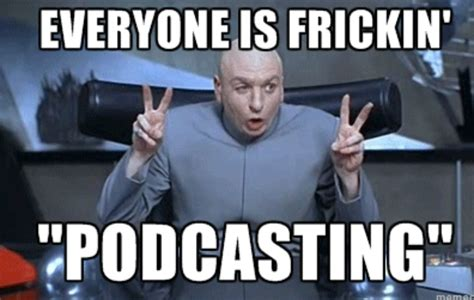
First of all, back away from the ledge. Podcasting is just a small furry relative of the blog. It can’t smell fear and won’t bite. And, as Kristen points out about blogs, podcasts are attention-whores. The more you love them, the more they will love you back.
Just like books and blogs, podcasts come in an endless variety of lengths and topics. There are five-minute podcasts that serve up daily horoscopes or fitness tips or financial advice…and there are three-hour podcasts that cover the history of the Roman empire. From parenting to politics, comedy to crime, there is a podcast for everyone.
Podcasts are free and easily accessible, ergo the appeal. Audiences can listen on their phones, laptops, or even refrigerators if said appliance has a smart panel with apps. All anyone needs to enjoy a podcast is an app like Apple Podcasts, Google Play, Spotify, Audible, etc.
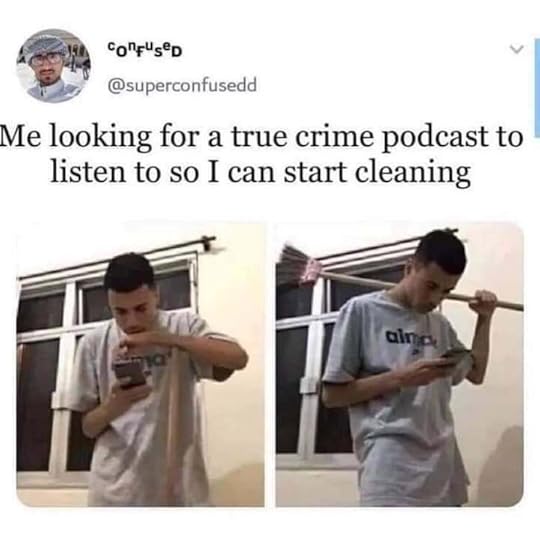
People listen to podcasts while commuting, cleaning, and cooking. Personally, I rely on true crime podcasts to get me through home renovation projects. The Wine and Crime gals got me through packing up our condo and moving cross-country in 2019. During 2020, I binged Ash and Alaina from Morbid because, what is better than Boston gals who talk murder?
The answer is nothing is better.
When we got our puppies, Meadow and Bandit, the only way they would get back to sleep after their 5:00 a.m. potty break was with a podcast episode of “Dateline.”
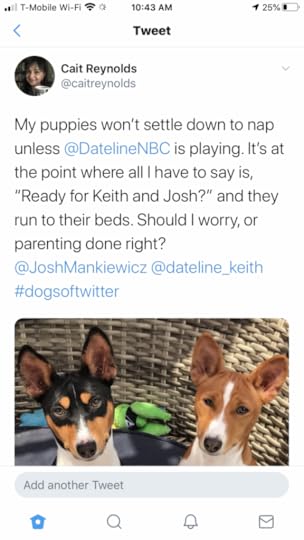 Bandit (L), Meadow (R)
Bandit (L), Meadow (R)
It seemed like a good idea at the time. I was really, really sleep-deprived, okay? Now, I’m pretty sure the pups are plotting how to kill me in a way that gets me my very own episode.
Why Podcasting?One of the most fundamental of Lamb’s Laws for Branding is: OWN YOUR CONTENT.
That is the whole point of having a website and blog. It’s content that endures and keeps working long after that TwitFaceGram+ post has been buried in the Mariana Trench of bots and dance videos. While quick hit content like social media posts do serve an important purpose, the cumulative effect—over time—of content we own is far greater.
We might get a comment on a blog post that was written two years ago because Google popped it into someone’s search results. But when was the last time someone replied to a two-year-old tweet? When was the last time we could find a two-year-old tweet?
Blogging is a natural fit for writers since sitting at a keyboard staring in despair at a blank screen for hours at a time is what we do. However, creating content you own doesn’t mean it has to be a blog.
*ducks flying projectiles from Texas*
If It Goes, It FlowsHear me out. Writers create CONTENT, but the medium for DELIVERING that content doesn’t specifically have to be a blog post.
Fun fact: one of the early ‘try-on’ terms for podcasting was AUDIOBLOGGING.
*cue Kristen over in a corner grinding teeth*
For example, I personally struggle with blogging. My anxiety shoots through the roof when I try to pick a topic, and my inner picky b*tch frets over the perfection of everything from phrasing to tags. As a result, I blog about as often as I go to the dentist (every six months).
However, after starting my podcast “Drunk Mythology Gals” back in mid-January, I find myself breezing through two thousand words per episode. I actually can’t keep up with all the ideas I have for topics. We just released episode 37 and have only missed one week since we started, but I was in the hospital that week, so we get a pass.
 Drunk Mythology Gals
Drunk Mythology GalsA ‘divinely’ funny podcast.
The point is that I found what clicked for me in terms of being able to leverage my skills as a writer to develop my brand and market my books. I can use each episode release to interact with fans and friends on social media, and our website is easy to update and maintain. And, all the episodes of our show are forever available until we decide otherwise.
While Kristen does flog the blog as the prime example of how writers can build their brand, her point is that creating content we are passionate about (yes, this includes interpretive dance) is the best way to connect with our audience and build a lasting brand.
But, but, but…Ah, yes, like a chorus of anguished echos from the mountain’s misty side, I can hear the objections now:
I don’t have time!I don’t have money!Audio stuff = rocket science!I don’t know what to do a podcast about! Time
TimeTime is relative (thanks, Einstein). We have time for what we want to do, and never enough time for the things we struggle with.
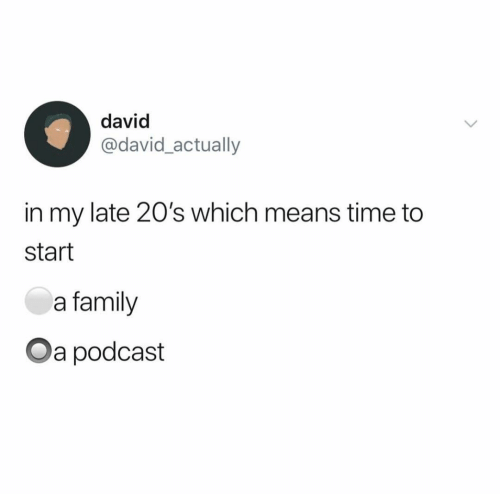
So far, this blog post has taken me about four agonizing hours just to get to this point. I get better at writing blogs the more I do them, but I don’t seem to get any faster. However, I can whip up a script for an episode in an hour-and-a-half. It just comes more naturally for me. It flows. Recording, distribution set-up, and promotion take about two hours.
From draft to social media promo, a podcast episode takes me about four hours, start-to-finish (and I am only getting faster as my skills and the tech improves). Compare that to writing a blog post that will probably end up needing six hours of intense suffering?
It’s clear where my time is better spent, for me at least.
MoneyIt is absolutely possible to start podcasting without spending a single cent. Yes, really and truly FREE (I go into all that in my classes—LISTED BELOW).
This means that it’s okay to try podcasting. Give it a whirl. Give it seven whirls. Once things ‘click,’ then it’s time to look at investing in the doo-dahs that will take the show to the next level.
Furthermore, it is even slightly easier to make money from podcasting than from publishing. Unlike the giant ball of wibbly wobbly that is the Amazon KDP global fund payout rate, podcasting is similar to radio advertising in terms of how ad rates are calculated.
Today, according to Intelligence Insider, almost 118 million people listen to podcasts monthly. That number is projected to grow to 144 million listeners by 2025.
Podcast advertising spending almost DOUBLED from $701 million in 2019 to $1.33 BILLION in 2021. Money follows the audience, and audiences are multi-tasking to unheard-of levels these days. What is perfect for keeping company during multi-tasking? Audio content in all its forms.
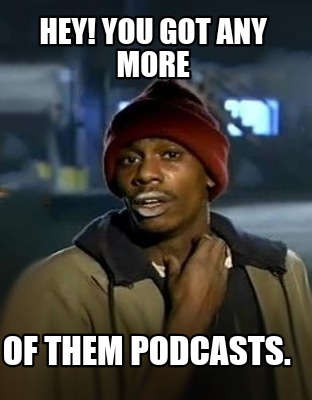
I’m not even including merchandise, subscription memberships, live tours, online shows, Patreon, and all the other ways podcasts make money these days.
This doesn’t mean every podcaster is going to be a millionaire. I said it’s slightly easier to be successful, and just like publishing, quality and persistence are key to success.
Audio stuff = rocket scienceYes…and no.

When I started looking into how to start a podcast back in 2017, I knew less than nothing about audio stuff. Yes, I will always refer to it as audio ‘stuff’ because audio engineering is a whole big thing…and life is short. All the YouTube videos, blog posts, and even podcasts about starting podcasts were way too technical for me.
True story: I mentioned podcasting to Kristen back then, and she threw holy water at me and ran screaming. Then two days later, she was back with three podcasts I JUST HAD to listen to, wanting to know when were we going to start ours?
Today, however, if you can talk on your smart phone, you can record a podcast.
With built-in post-production, drag and drop editing, and free sounds and music, ‘producing’ a podcast episode is honestly super simple. Setting up distribution for an episode is way easier and far less nerve-wracking than setting up a book for publication.
Worse comes to worst, there are freelancers that will tweak your audio for as little as $5.
Honestly, quality content is THE most important aspect of a podcast. I go back to the first episodes of my favorite podcasts, and woof! The sound was really bad. REALLY BAD. But the content was so riveting or hilarious that I had to keep listening and I didn’t care.
Content is king…and queen…and pretty much the whole royal family.
Even with “Drunk Mythology Gals,” our first eleven episodes were an exercise in how long listeners could handle hearing chalkboard nails while underwater. Once Gen and I decided we were going to stick with it, we paid a freelance audio guy $20 to sit online with us for an hour and walk us through some basics of how to improve our audio.
Now, we have Kim who handles all our production (and uses sound effects to troll us because she can). Also, like a lot of other podcasts, we are re-recording the early episodes one by one to bring the sound up to speed (and so our other co-host Jenn can put in her two cents).
I mean, who doesn’t love an industry that is like, “Yeah, mulligans are totally cool.”
I don’t know what to podcast about!The most important thing about picking a podcast topic is that we have to love it. Really, really, truly love it. That is the secret to choosing a podcasting subject.
Do you write historical fiction? Science fiction? Police/detective stories? Is there a topic you find yourself consistently researching across stories (e.g. forensic psychology, cooking or forensic cooking)? If you can answer a resounding YES to any of these questions, then you have something to podcast about.

I am an absolute history nerd, especially ancient history. Over the course of writing Downcast, I amassed a ton of research in addition to my already pretty-extensive non-fiction library. With all of this material in my brain and at my fingertips, I have enough topics for YEARS of podcast episodes.
Is mythology the most popular genre in podcasting? Obviously not. But are there enough people who enjoy mythology to make up a decent sized audience? Sure. Are there enough who might then also be interested in my book? Absolutely!
A podcast doesn’t necessarily have to draw a direct line to our writing. Remember, Kristen doesn’t say every writer has to blog about writing. She says blog about what you love…and she is passionate about writing, so this is what she LOVES to talk about.
Another way to figure out a podcast topic is to remember that time we were at a party, talking to some people we had just met…and then they mentioned X, and we were like, “OMG, I know all about that! Let me tell you and did you know and this little known fact and hey where are you going it’s-only-duct-tape-and-handcuffs?”
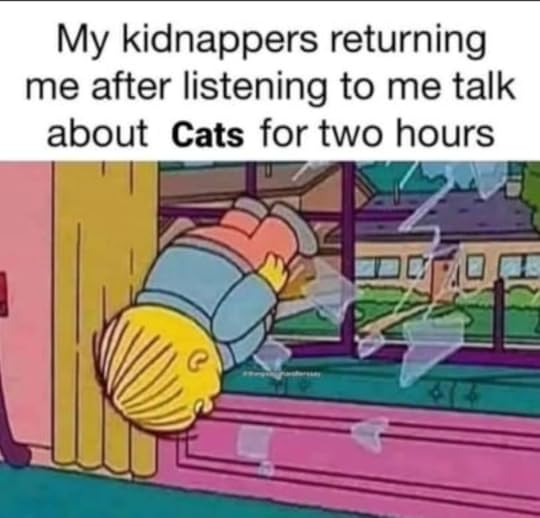
What doesn’t work for kidnapping…er…small talk at a party will probably make for a good podcast that people will listen to…as they chew through the ropes.
Pod PeopleI’m baaaack! Thank you Cait for being here! *tosses her key to handcuffs*
For the record, I never ask anyone try or do anything I’ve not tested myself. When Cait first mentioned podcasting, I very literally had a fit. Not my most shining moment. In my defense, this happened during that period of time I really was willing to die on ‘The Hill of Fighting Against Writers Paid in EXPOSURE DOLLARS.’
Once I calmed down, mopped up the holy water and swept away the salt circle, I was at least willing to entertain Cait’s suggestion….and have been down the rabbit hole since. For the record, I was the one who introduced Cait to Wine and Crime and Morbid, as well as the fabulous True Crime Obsessed.
TCO’s Patrick Hinds and Gililan Pensavalle helped me endure TWO ROUNDS of six straight hours of dental work (12 HOURS)….without having a nervous breakdown. I could listen to them and block out the dentist replacing half my teeth (yes, I am a grinder who cannot keep up with a mouth guard so stop judging me).
Like all content I love, I am positively evangelical, and have converted family and friends to TCO fans and Patreon supporters.
Cait and I have even recorded two seasons of our own comedy podcast BFFs: Bad Friends Forever, which we’ll be releasing once I’m comfortable we have a solid base number of episodes. So there’s that ‘won’t make y’all try anything I haven’t’ thing.
It is part of the reason I asked Cait to come teach podcasting. If she can convert someone like me who didn’t need ONE MORE FRIGGIN’ THING TO DO and who isn’t tech savvy enough to organize e-maii?
Trust me, she’s got you.
Thank You For Being HERE!I know I promised last time to work on posting shorter blogs. But I DID add the caveat, “when I can.” I hope y’all enjoyed this article. Cait put a ton of work into condensing a monster amount of information into a singular post… that’s also fun to read.
What are your thoughts? Questions? Comments? Do you listen to podcasts? Which ones are your favorites and why? Have we helped those who are terrified at least consider that podcasting might not melt the flesh off your bones?
If you scroll down, Cait is offering three classes on podcasting. There are discounts for early registration as well as a podcasting bundle that will save you WAY more than all the discounts combined.
I LOVE hearing from you!Comments for guests get EXTRA CREDIT. To prove it and show my love, for the month of OCTOBER, everyone who leaves a comment I will put your name in a hat. If you comment and link back to my blog on your blog, you get your name in the hat twice. What do you win? The unvarnished truth from yours truly. I will pick a winner once a month and it will be a critique of the first 20 pages of your novel, or your query letter, or your synopsis (5 pages or less).
AND REMEMBER to treat yourself to a class! I don’t reveal all my best intel on my blogs.
Classes!Introduction to Podcasting 10/15/21Register HERE and use New20 for $20 off before October 5th
Writing for Podcasting 10/22/21Register HERE and use New20 for $20 off before October 15th
How to Make MONEY & The Business of Podcasting 10/26/12Register HERE and use New20 for $20 off before October 15th
The Pod People Podcasting Bundle: ALL THREE Classes ONE Low PriceRegister HERE to get all three classes and save BIG!
Practice Your Pitch: Master the Log-Line 10/14/21Register HERE and use Pitch10 for $10 off if register by 10/1/21
The Edge: How to Write Mystery, Suspense & Thriller 10/21/21Register HERE and use Thrill10 for $10 off if you register by 10/14/21
The post Is Podcasting the New Blog? appeared first on Kristen Lamb.
September 28, 2021
Finding TIME: Five Simple Ways to Finish a Book
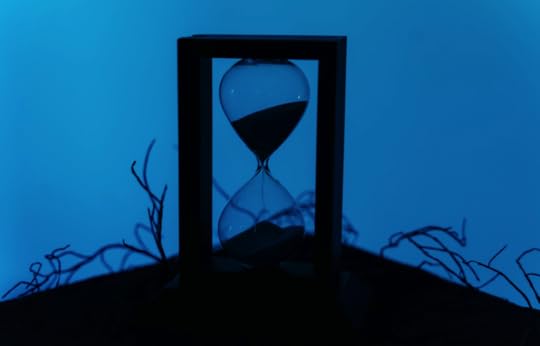
Finding time has always been a challenge. While the modern world keeps promising to help us with this ‘finding time’ thing…it’s ALL LIES.
We have dreams and deadlines and most of us have grown fond of clean clothes. Also, our family is all needy and whiny and says things like, “Mommy, why is there no food?” “Daddy, why won’t the lights turn on?” “Honey, why are there people living in our basement?”
*rolls eyes*
Can you say, “high maintenance?”
OKAY, so tips…
First, a ‘Mea Culpa‘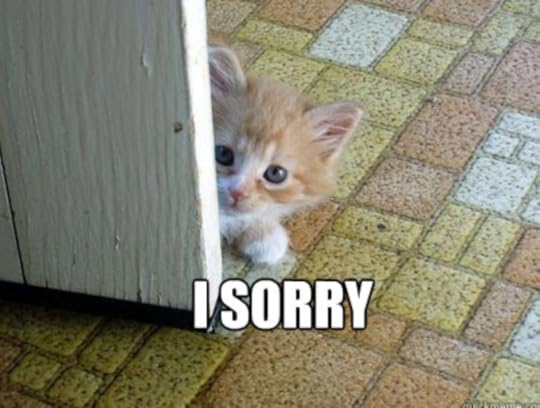
I know my posts have been long. Mea culpa. Between the ghostwriting project and being ill, I was lucky to be able to blog at all. One to four times a month was about all I could do. Aaaand, I was afraid of y’all missing out on something important.
Now that I’ve gotten back to a schedule, I’m going to do my best to shorten these suckers up when I can. And thank you guys for being here. I appreciate y’all SO MUCH and I do value your time.
Moving on…
So how do we do this ‘finding time’ thing? It isn’t like time is lurking between the couch cushions like the remote, pet hair, and petrified cereal, sooo….
1. Accept There is No Such Thing as ‘Finding Time‘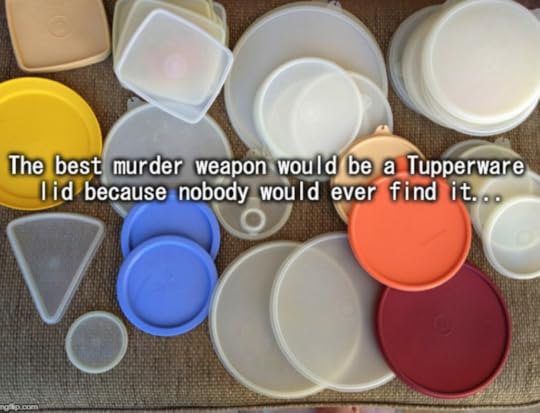
If we want to excel at ‘finding time’ we need to accept that we have yet to figure out how to manipulate the space-time continuum to our advantage. Laundry and dishes have, but they’ve thus far refused to share their technology.
***Much like socks and Tupperware lids refuse to share teleportation technology.
In all seriousness, the simple act of accepting time is all around and only moving forward and faster as we age, can go a long way. If we keep believing in the ‘finding time’ myth, time will evade us easier than Sasquatch and Nessie’s love child.
This is when we suck it up and accept we need to MAKE TiME.
This is doable. If I told y’all tomorrow I could and would pay $10 MILLION to anyone who finished NaNoWriMo? I am betting we’d have the highest ‘winning’ rate in the history of NaNoWriMo.
***For anyone who doesn’t know, NaNoWriMo stands for National Want to Murder Your Family for Interrupting You Month. Wait, my bad. No, it is National Novel Writing Month and the challenge is to write 50,000 words in the month of November.
2. Perfect is the Enemy of the Finished
I just mentioned the space-time continuum. If you’re any kind of a science nerd, you’ve probably heard there’s this concept referred to as ‘folding space.’ If it really IS possible to fold the fabric of space-time, then I’m pretty sure space-time is The Fitted Sheet from Hell.
Sometimes, we just have to wad that sucker up, do our best and sally forth.
‘Finding Time’ is an imperfect activity at best. Most writers also work a full-time job, are parents, partners and are responsible for a TON of things that are not writing.
Me? If the house isn’t clean enough to have guests, all the laundry washed and put away and the yard mowed? I struggle with apoplexy sitting down to write….even though writing has been MY JOB for around 20 years.
I am not where I want to be, but not where I used to be.
Make a habit of carving out a particular time to WRITE. Even if it’s only a couple of pages, and even if you’re so behind on laundry your kids are wearing their swim suits to church.
Writing time is sacrosanct. I use a timer, and set it for a minimum of 45 minutes. Whatever I can do in that small chunk of time?
Well, can’t edit what I never put on the page.For anyone interested, I pay for a NING (a private ‘social media’ group called W.A.N.A.Tribe) .Think of W.A.N.A.Tribe—W.A.N.A. stands for ‘We Are Not Alone’—more as a ‘digital office’ you share with fellow writers. We offer accountability and—since I am benevolent dictator—ads, politics, drama, distractions and spam are strictly forbidden.
We have very literally been doing writing sprints for almost seven years. Five days a week, every week, all year, and often all day, we are in the chat sprinting, writing, laughing, encouraging, so feel free to join us.
Back to a ‘page’…
The industry standard for a ‘page’ is 250 words. We are writers, and we can write 250 words a day. Do that every weekday and, within a few months, you’ll have a finished book. Granted, it will be a short book, but it will be something. Something is better than nothing.
And, odds are, once you get going, if you keep moving forward, you’ll probably do more than ONE page.
3. ‘Finding Time’ is Related to Proper Preparation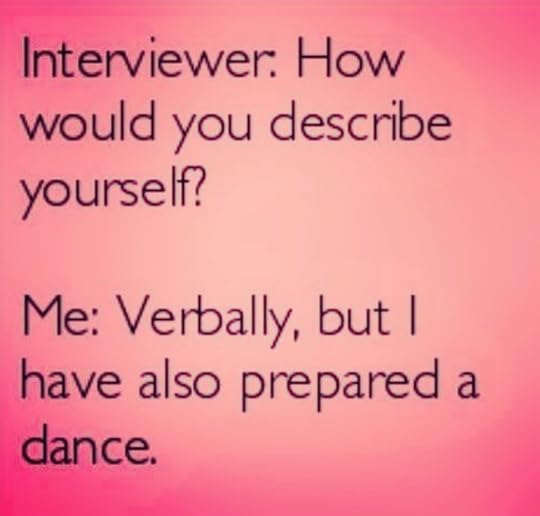
I get it. Many writers love being pantsers (writing by the seat of your pants). To be blunt, though? This method of writing— especially if you don’t understand story structure deep within the marrow of your bones—can be problematic. It is easy to get off course, lose the tension/conflict, and end up having to do a gazillion revisions.
I’m in no way suggesting you change your personality or style…just maybe modify it a bit to help you finish.
Even doing something as simple as writing out a log-line can do WONDERS. With a log-line, we know what our story is ABOUT. If we can scribble in some main plot points? Even better.
***Keep in mind these ‘main points’ serve as general guideposts. They’re not set in concrete.
Doing just this little extra bit helps you remember the entire GOAL of your story and, since you ‘know’ the major benchmarks, it’s easier to make better use of limited time.
Here is a great example of a log-line, the oldie but goodie, Romancing the Stone.
A fraidy cat romance author must travel to South America and team up with a shady ex pat in order to rescue her sister from jewel thieves before the crooks kill her sister.We can almost SEE all the plot points and BONUS! We know the ending. Author thwarts thieves and rescues sister (with help of shady ex pat because it is a romance).
See? No detailed outline needed and SO MUCH easier to stay on track.
***Check out the post I hyperlinked or sign up for my upcoming workshop if you need help mastering this skill. We work on YOUR log-line until it is good to go.
4. ‘Finding Time’ and Research
One way we writers LOVE to goof off, yet still claim we are ‘writing’ is….research. If you know you’re going to write a book and get down the log-line at least (and scribble down some main plot points that CAN change), then you know what to research.
Set aside a limited block of time and read up.
Save any useful websites. Bookmark them, save in Excel, a file, or a video using coded jazz hands. Don’t care. The idea is to simply be familiar with the subject ahead of time and to have proper documents easily accessible.
Since there is NO way to know all the information we’ll need, if you hit a spot and don’t know? Just keep writing. If we take the above example, Romancing the Stone, and imagine this as our book? Then we might want want to describe the jungle. Fine. In another color, write insert cool jungle details here later…then move on.
Tell the story, FIRST. Then, flesh out the story once the first draft is finished.
5. ‘Finding Time’ Means SALLY FORTH!
This is similar to the tip above. Brain farts happen. Maybe you know your ending, but you hit a wall somewhere in Act 2. It happens. If, however, you know what is likely to happen next, simply type, in an other color, something super cool happens in here…then sally forth.
Keep moving forward.
Deep down, you know your story. Let your subconscious chew on the trouble. Very often it will come up with crazy twists and turns you never would have found by giving yourself an aneurism trying to manhandle the story forward.
Too many writers (and I have been guilty) get scope-locked on perfection. We go back and edit and revise and tweak the heart and soul right out of the story. As I have said before, there has never been a runaway hit/international best-selling HALF of a PERFECT book.
***That and there is no such thing as ‘a perfect book.’
To do this writing thing professionally, we have GOT to become finishers. We cannot revise what isn’t on the page.
And, for those who claim they cannot possibly do a log-line or plot points or continue forth without perfection? If y’all are finishing books then just keep on keeping on. Dean Koontz writes FIVE pages a day and never revises.
But…um…he’s Dean Koontz.
This advice is for the rest of us mere mortals. Trust me, every time I ignore my own advice? I end up writing myself into a corner, held hostage by plot bunnies. So, I hope at least some of these tips help y’all out. The more books we finish, the better writers we become.
***Yes, I remember we were going to address podcasting. That’s later in the week, so stay tuned!
I LOVE hearing from you!Do these tips help? Can you think of any to add? What has worked for you? What do you still struggle with?
To prove it and show my love, for the month of SEPTEMBER, everyone who leaves a comment I will put your name in a hat. If you comment and link back to my blog on your blog, you get your name in the hat twice. What do you win? The unvarnished truth from yours truly. I will pick a winner once a month and it will be a critique of the first 20 pages of your novel, or your query letter, or your synopsis (5 pages or less).
AND REMEMBER to treat yourself to a class! I don’t reveal all my best intel on my blogs ;).
Classes!Practice Your Pitch: Master the Log-Line 10/14/21Register HERE and use Pitch10 for $10 off if register by 10/1/21
Bring on the Binge: How to Plot & Write a Series 9/30/21Register HERE and use Binge 20 for $20 off until 9/21/21
The Edge: How to Write Mystery, Suspense & Thriller 10/21/21Register HERE and use Thrill10 for $10 off if you register by 10/14/21
The post Finding TIME: Five Simple Ways to Finish a Book appeared first on Kristen Lamb.



